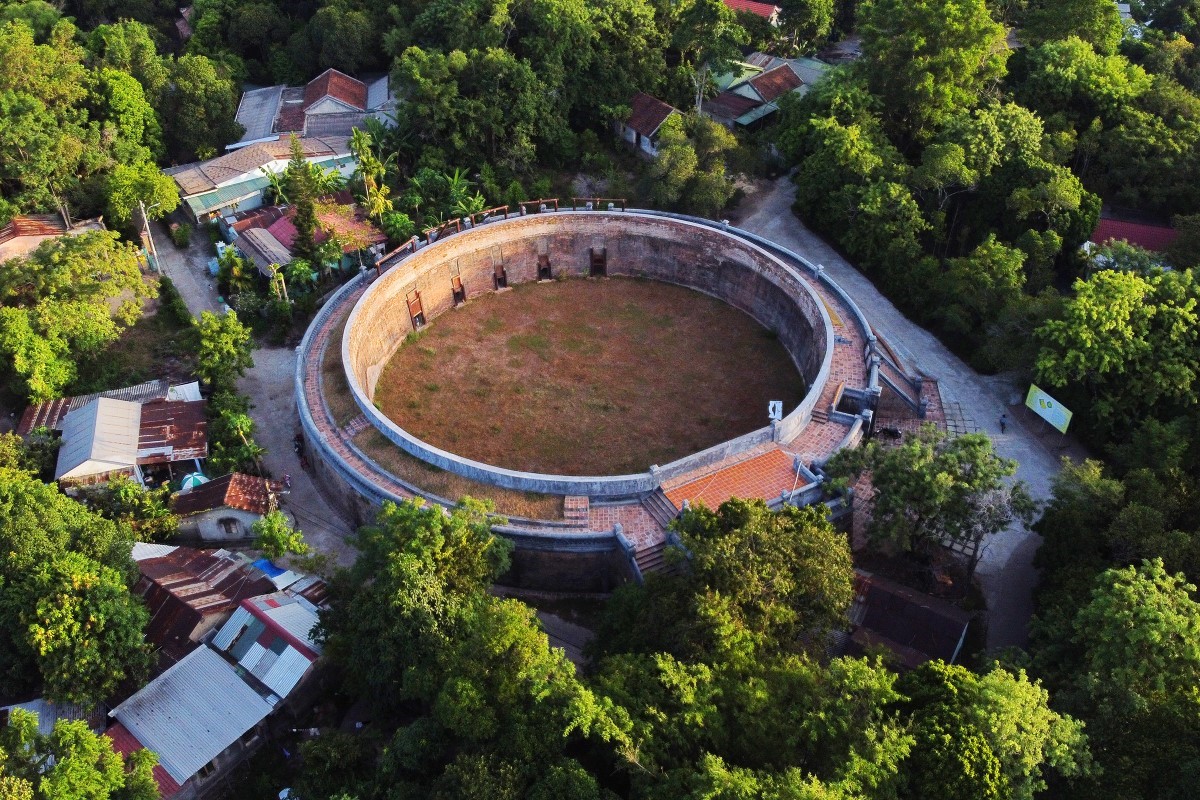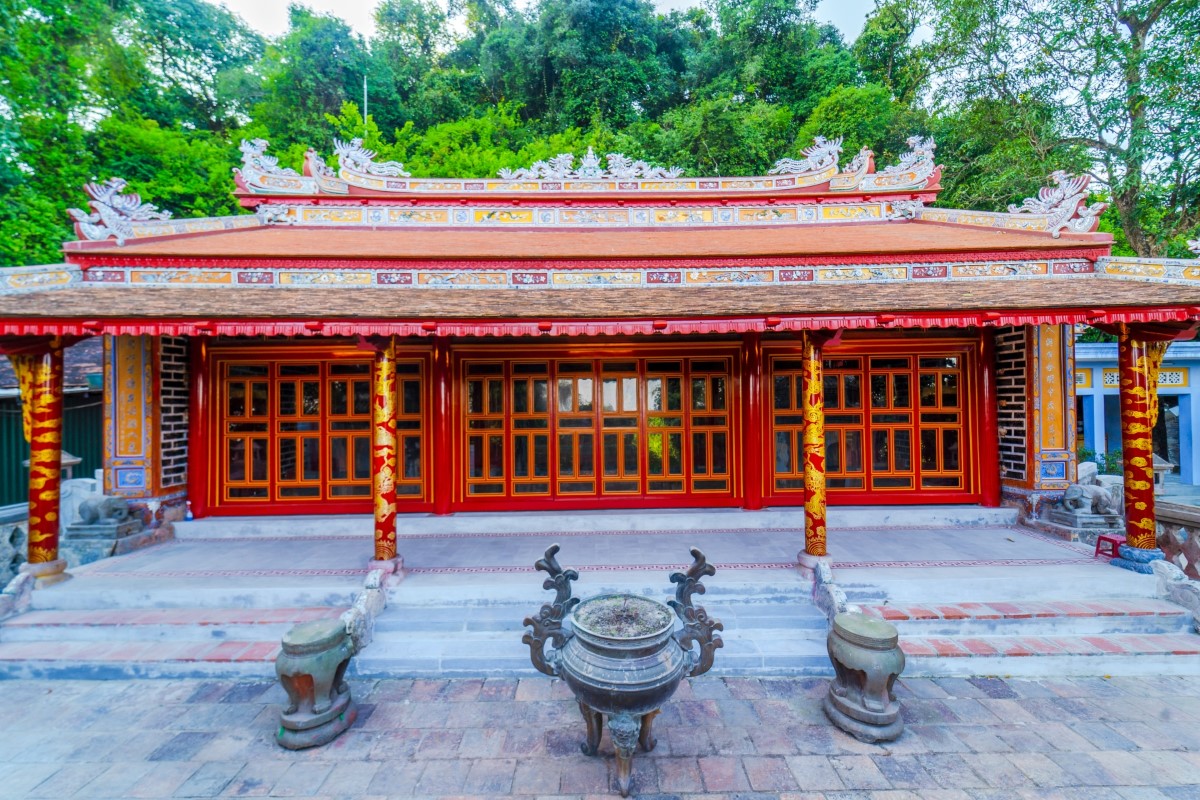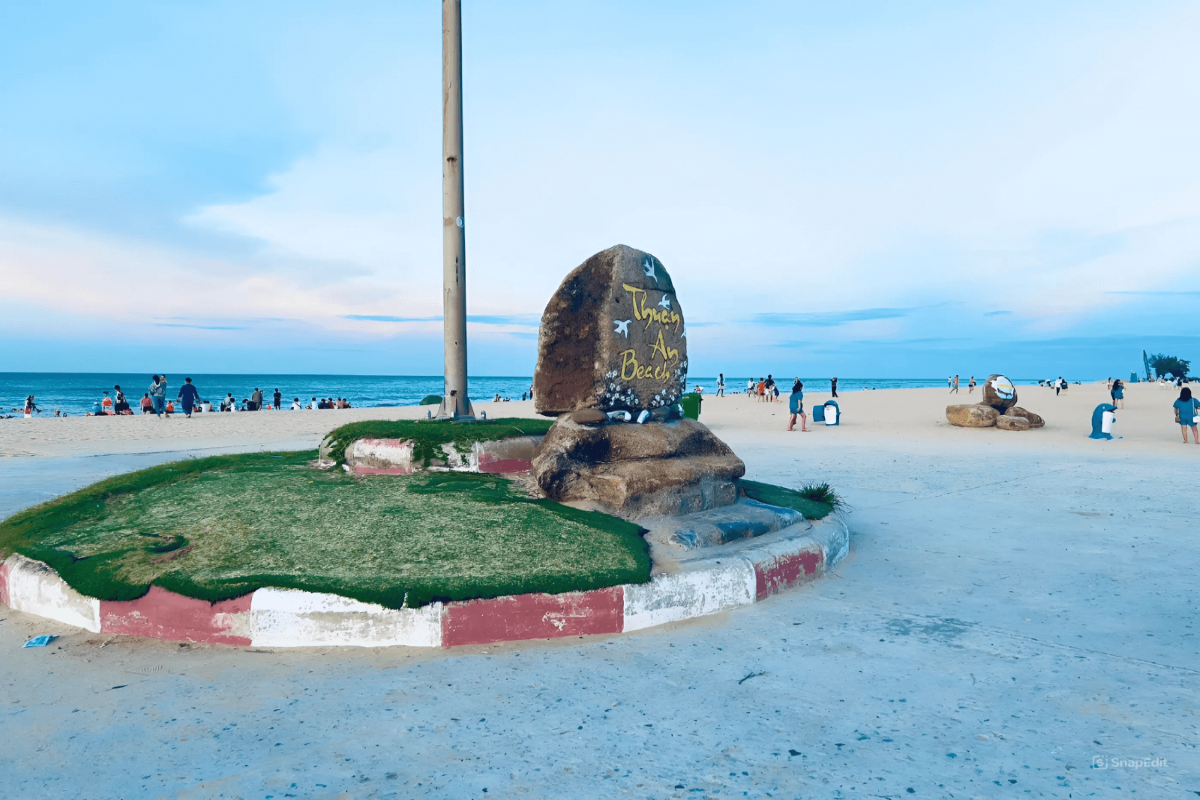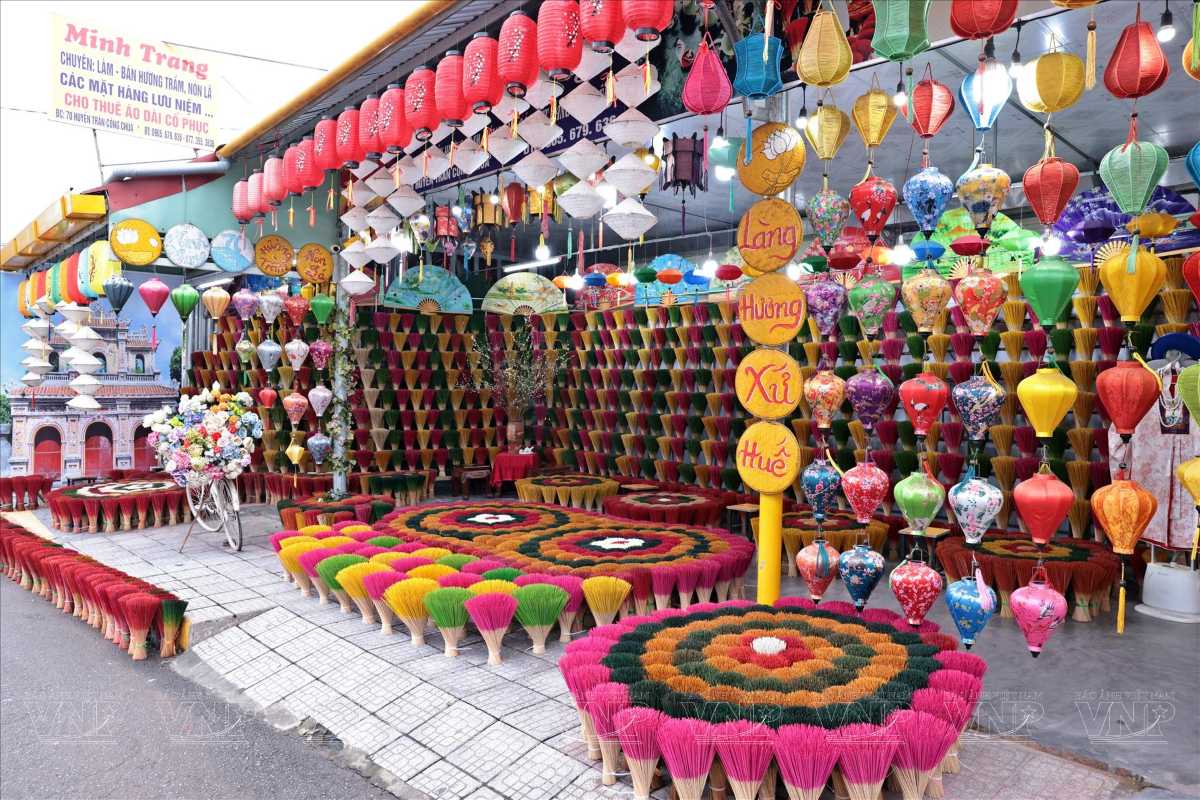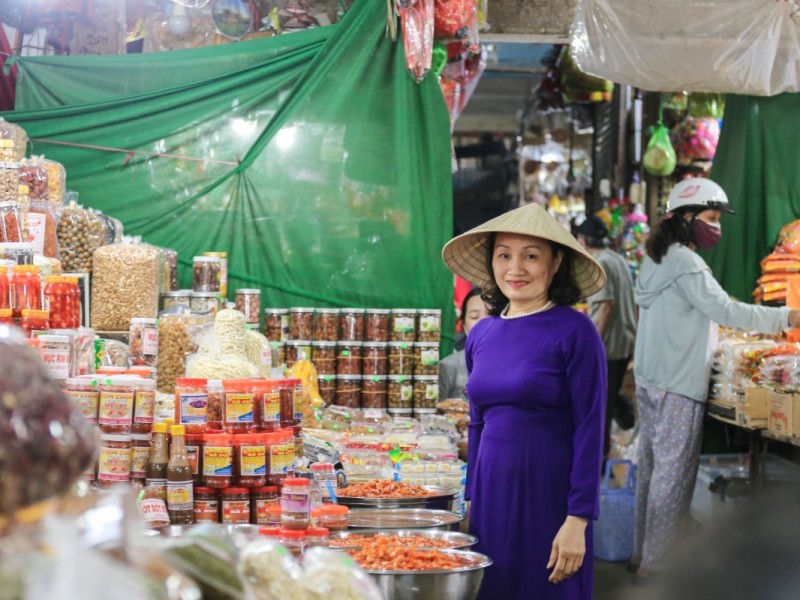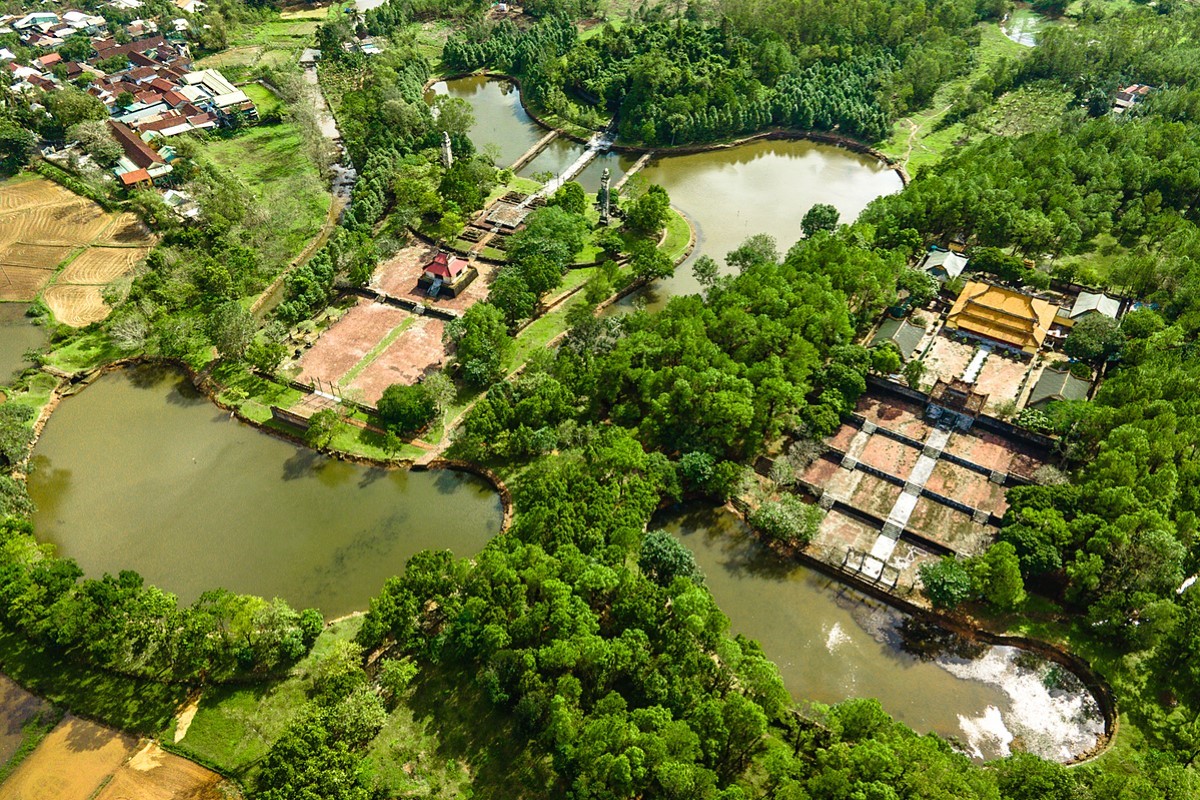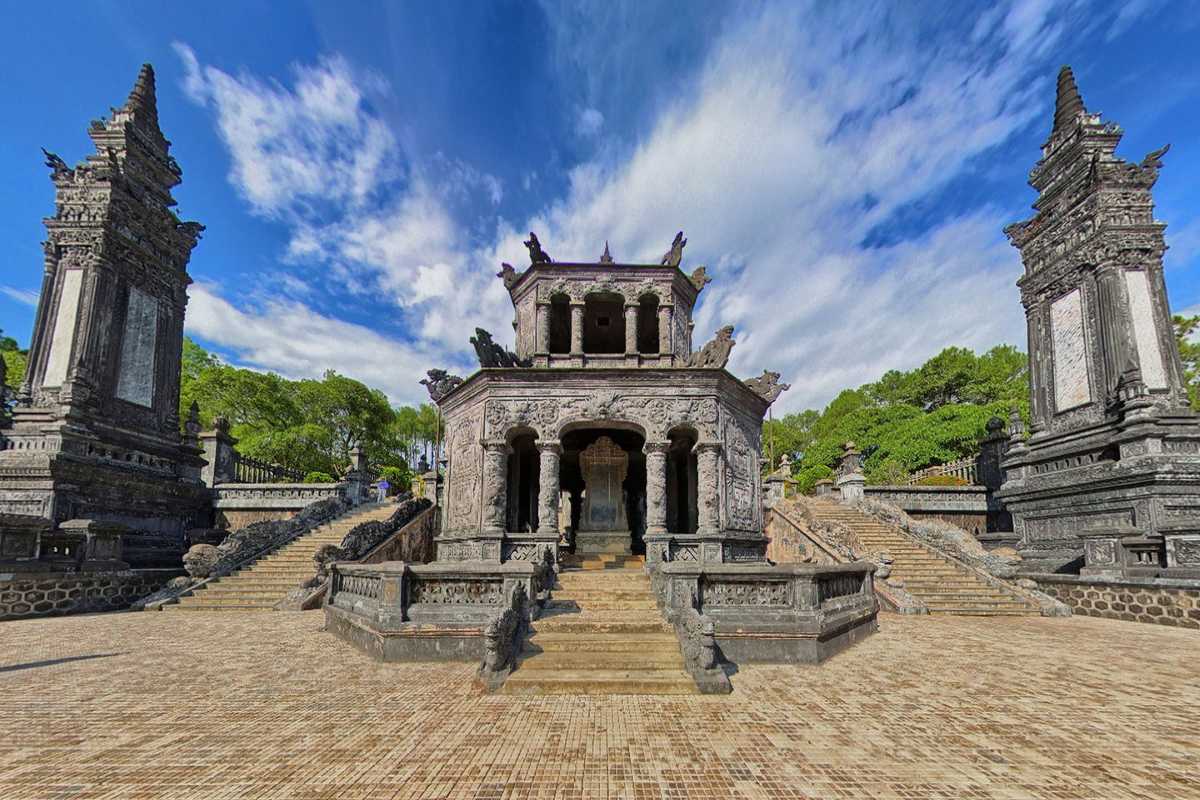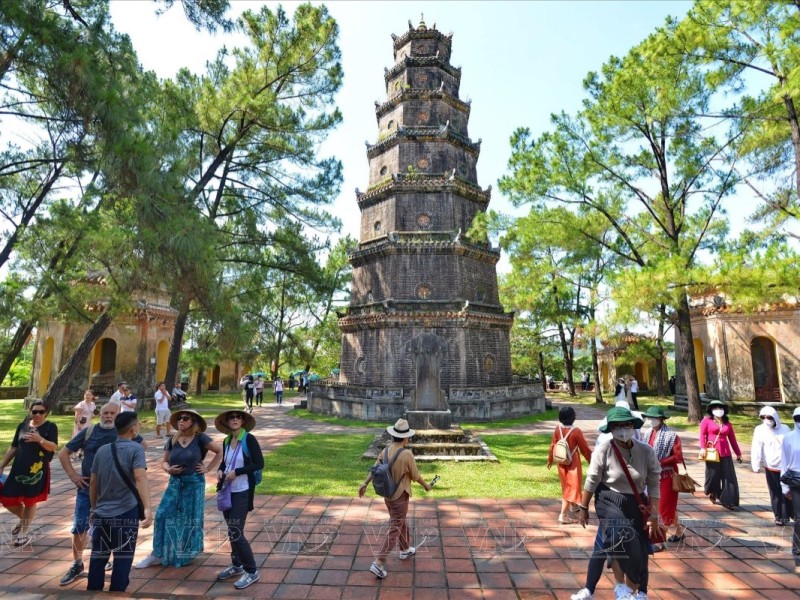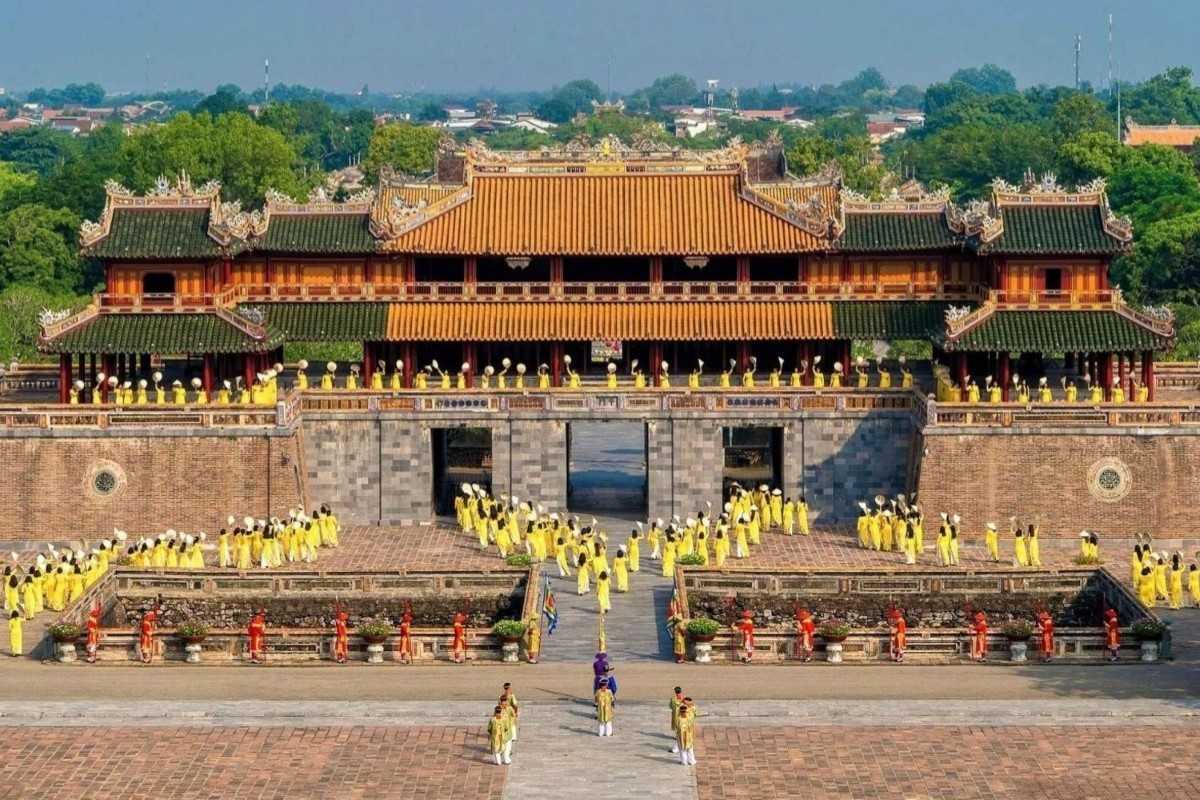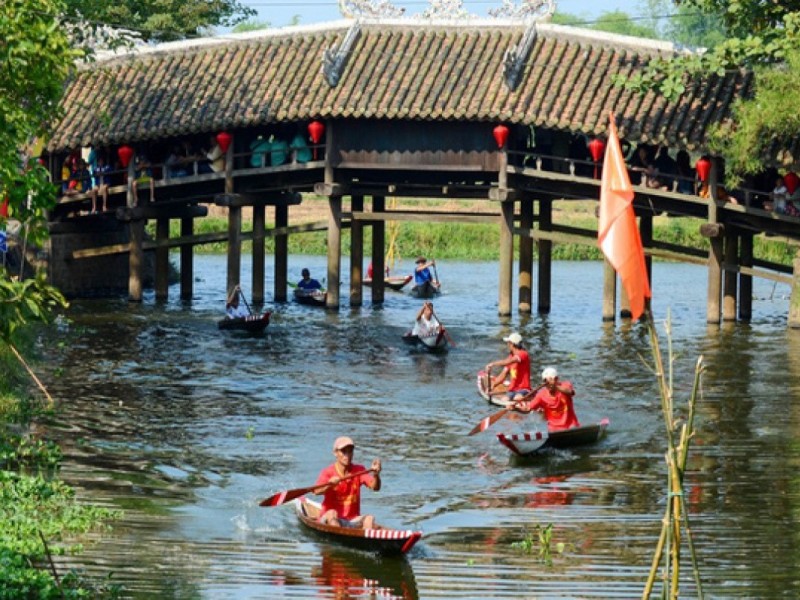Hue Museum of Royal Antiquities: Discover Vietnam’s Royal Treasures
Hue Museum of Royal Antiquities showcases Vietnam’s royal treasures from the Nguyen Dynasty, including imperial robes, golden thrones, and rare Bleu de Hue porcelain. Visitors experience authentic Vietnamese history in the heart of Hue, with unique artifacts displayed inside the historic Long An Palace, a highlight of Vietnam’s cultural heritage.
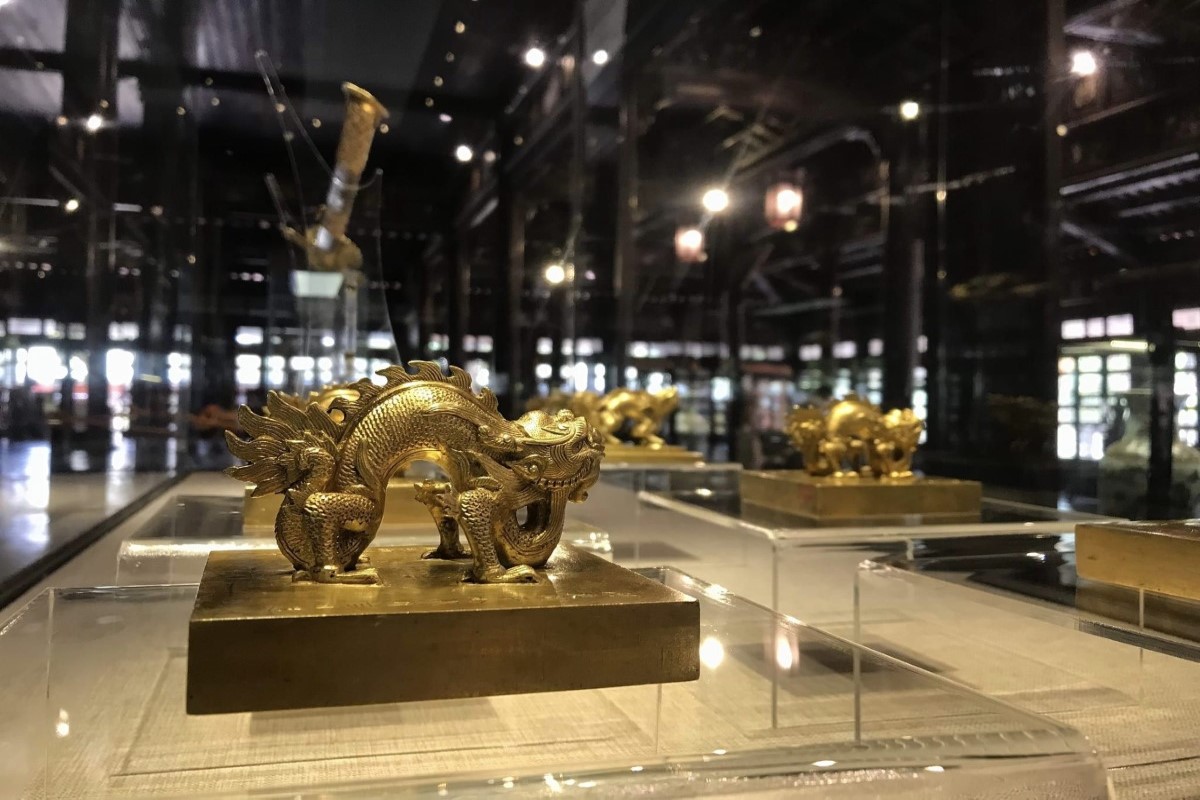
Exploring Vietnam's Royal Heritage at Hue Museum of Royal Antiquities
The Hue Museum of Royal Antiquities is more than a mere collection of artifacts—it is a living testament to Vietnam's royal legacy and cultural heritage. Nestled in the heart of the historic city of Hue, this museum offers visitors an unparalleled opportunity to immerse themselves in the world of the Nguyen Dynasty, Vietnam’s last and most illustrious ruling family. As you step through its doors, you are transported to a time when emperors and empresses roamed these halls, surrounded by priceless treasures that reflect the power, artistry, and grandeur of their reign. For history enthusiasts, cultural explorers, and casual tourists alike, the museum provides a rare glimpse into the opulent lifestyle and intricate traditions of Vietnam’s royal family.
Whether it’s the imperial robes, the intricately carved golden throne, or the delicate Bleu de Hue porcelain collection, each artifact holds a story of Vietnam’s royal history, offering visitors a journey through centuries of cultural evolution and imperial splendor. The museum stands as a proud symbol of Vietnam's dedication to preserving its rich heritage, making it a must-visit destination for anyone seeking to connect with the nation’s past.
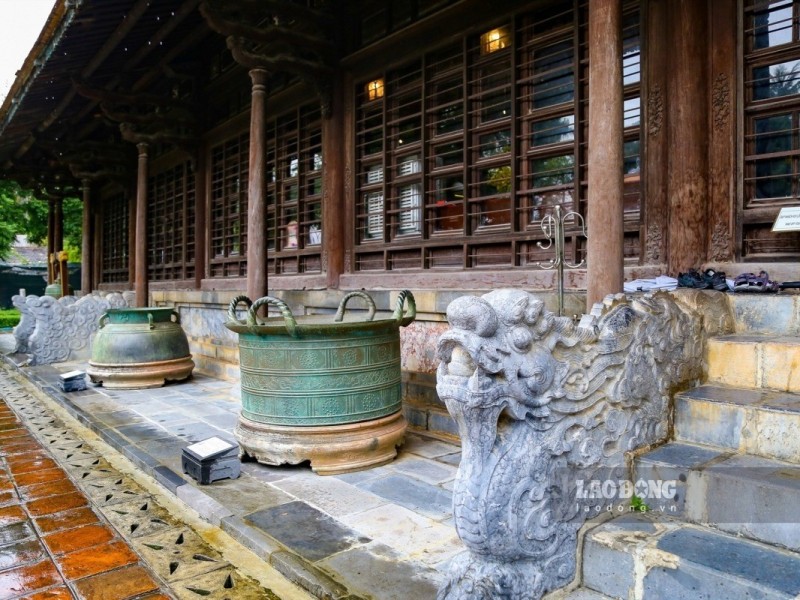
A Gateway to Vietnam’s Imperial Legacy
Hidden within the ancient city of Hue, the Hue Museum of Royal Antiquities offers a rare glimpse into the opulent world of the Nguyen Dynasty, Vietnam’s last royal family. This museum is not just a collection of artifacts but a carefully curated journey through time, where visitors can immerse themselves in the grandeur and rich history that shaped Vietnam’s royal heritage. From delicate royal porcelain to intricately embroidered imperial robes, each piece tells a story of Vietnam's past, offering a window into the lives of emperors and nobility.
Set against the backdrop of the historical Long An Palace, the museum preserves the grandeur of a time when Vietnam’s imperial power was at its peak. Whether you’re a history enthusiast, a cultural explorer, or simply curious about the grandeur of the past, the museum promises a journey that will ignite your imagination and deepen your appreciation for Vietnam’s royal history.
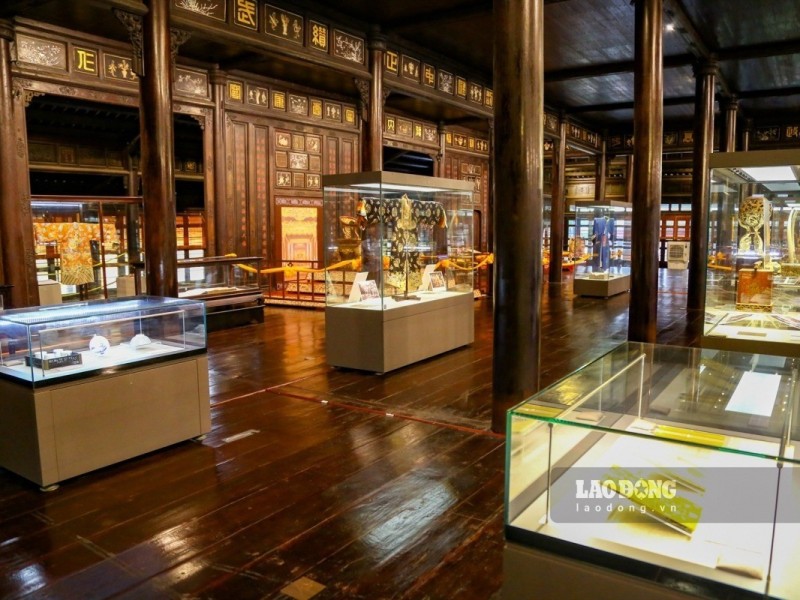
Why This Museum Should Be on Your Travel Itinerary
If you’re planning a trip to Vietnam, the Hue Museum of Royal Antiquities should be a top priority on your travel list. As you walk through its corridors, you’ll be transported to a world of royal treasures and imperial splendor that are rarely found elsewhere. Located in the heart of Hue, a city renowned for its historical significance, the museum is more than just a tourist attraction—it’s an experience that connects visitors to Vietnam’s imperial past.
The museum not only houses centuries-old relics but also stands as a symbol of the lasting cultural and political impact of the Nguyen Dynasty. From the architectural beauty of Long An Palace to the ancient golden throne, this museum is a must-visit for those who want to truly understand the depth of Vietnamese history.
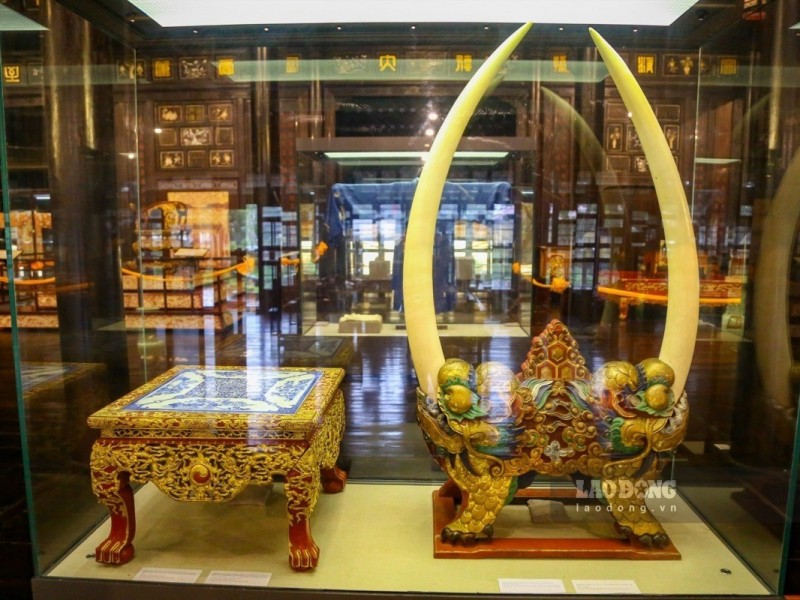
Step Back in Time: The Allure of Hue Museum of Royal Antiquities
As you enter the Hue Museum of Royal Antiquities, you immediately feel the weight of history pressing upon you. The museum's treasures, carefully preserved and displayed, draw you into the world of the Nguyen Dynasty, where the grandeur of imperial life is meticulously documented. From the richly embroidered imperial garments to the ornate royal accessories, every piece tells a unique story of wealth, power, and artistry. The museum is more than just a repository of artifacts; it is an immersive experience that offers visitors a chance to walk in the footsteps of emperors, royal concubines, and courtiers, and to feel the pulse of a royal legacy that shaped the nation.
For those with a passion for history or an eye for beauty, the museum provides an unparalleled window into Vietnam’s imperial past. It is a place where history comes alive, where visitors can not only observe but also connect with the centuries-old traditions that continue to influence Vietnamese culture today. Whether you are admiring the intricate craftsmanship of the Bleu de Hue porcelain or marveling at the grandeur of the Nguyen Dynasty’s golden throne, the museum offers a profound and unforgettable journey through time.
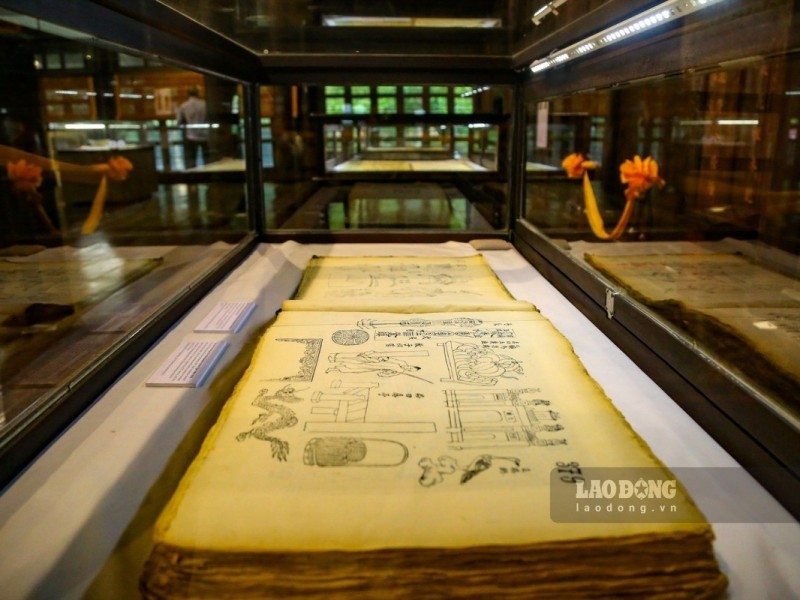
The Cultural Importance of Hue Museum
The Hue Museum of Royal Antiquities stands as a vital pillar in preserving the cultural heritage of Vietnam. Located within the walls of the Imperial City of Hue, this museum offers a unique opportunity for visitors to explore the deeply intertwined relationship between the royal family and the development of Vietnamese culture. The museum’s collection showcases the craftsmanship of Nguyen Dynasty artisans, each piece a testament to the royal family’s influence on art, culture, and politics.
As you explore the carefully preserved treasures, from imperial robes to ceremonial items, you gain a deeper understanding of how the Nguyen Dynasty shaped Vietnam’s cultural landscape. Visitors often leave in awe of the intricacy and artistry behind each artifact, recognizing the historical significance these pieces hold. The museum's displays give you a profound connection to Vietnam’s royal history, allowing you to walk in the footsteps of emperors and their court.
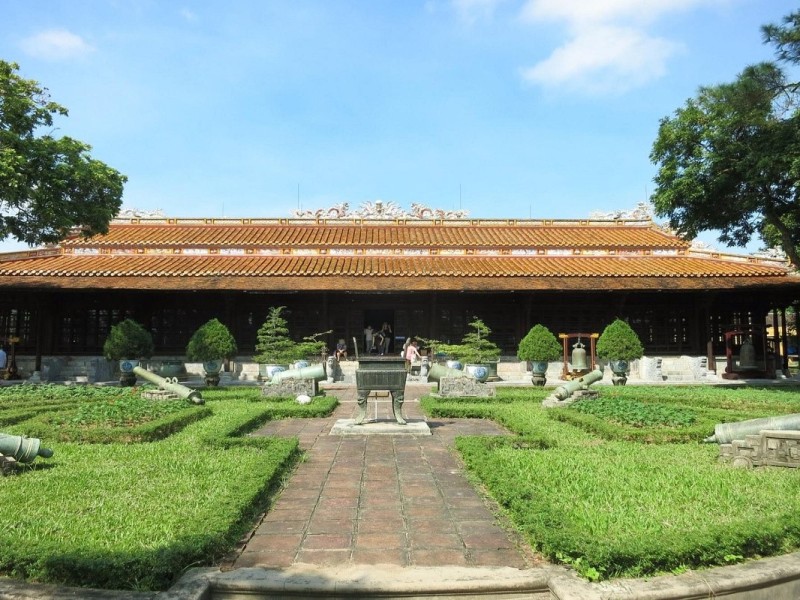
The Rich Legacy of the Nguyen Dynasty
The Nguyen Dynasty left a lasting imprint on Vietnamese history, and nowhere is this more apparent than in the Hue Museum of Royal Antiquities. Founded in the 19th century, the Nguyen Dynasty was Vietnam's last royal family, and its influence is still seen in many aspects of Vietnamese culture today. From the establishment of the Imperial City of Hue as the political capital to the advancement of art, literature, and architecture, the Nguyen rulers shaped the identity of modern Vietnam.
As you stand before the golden throne of the emperor or view the intricate designs of royal palanquins, it’s hard not to be struck by the power and elegance that the Nguyen family wielded. The Nguyen Dynasty’s contribution to Vietnam goes beyond politics; it’s a legacy of artistry, culture, and tradition that continues to resonate in the hearts of the Vietnamese people.
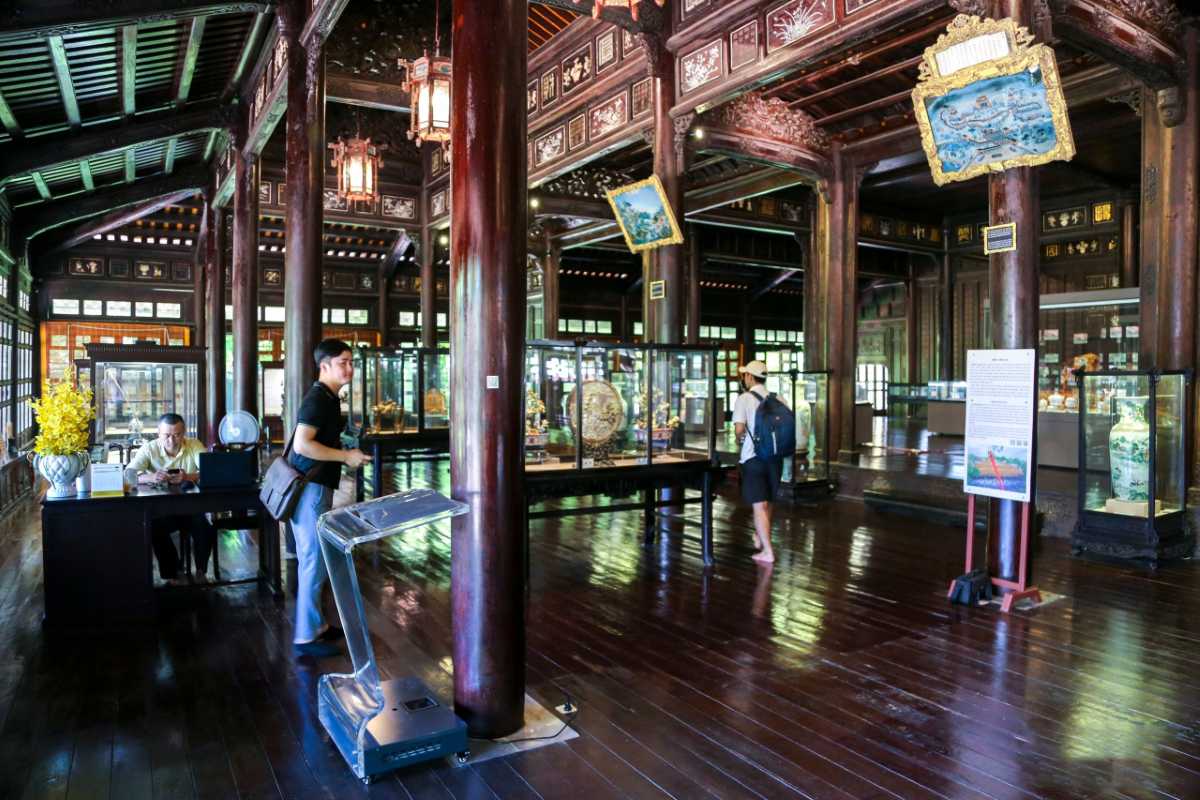
The Significance of the Nguyen Dynasty in Vietnamese History
The Nguyen Dynasty played a pivotal role in shaping Vietnam’s history, ruling from 1802 to 1945 and leaving a lasting legacy on the country’s cultural, political, and artistic development. As the last royal family to rule Vietnam, the Nguyen emperors presided over a period of both remarkable progress and profound challenges. They unified Vietnam, established Hue as the imperial capital, and oversaw an era of cultural flourishing that is still evident in the country’s artistic and architectural achievements. The Nguyen Dynasty’s legacy is most visibly reflected in the stunning Imperial City of Hue, with its palaces, temples, and monuments that continue to draw visitors from around the world.
The significance of the Nguyen Dynasty extends beyond political accomplishments; they were patrons of the arts, commissioning the creation of intricate royal artifacts that showcase the highest level of craftsmanship in Vietnamese history. Their support of the arts, literature, and architecture left an indelible mark on the nation's identity, making them key figures in the preservation and promotion of Vietnam’s cultural heritage. For visitors to the Hue Museum of Royal Antiquities, exploring these artifacts offers a profound connection to the legacy of the Nguyen Dynasty, allowing them to appreciate the dynasty’s impact on Vietnamese society.
The Founding of Hue as the Imperial Capital
The rise of Hue as the imperial capital during the Nguyen Dynasty was a pivotal moment in Vietnam's history. The decision to move the capital to Hue wasn’t just political—it symbolized the beginning of a new era of centralized power and cultural development. Emperor Gia Long, the first ruler of the Nguyen Dynasty, envisioned Hue as the heart of his empire, a city that would represent the strength and unity of a newly unified Vietnam.
The city’s carefully designed palaces, temples, and monuments were not only meant to showcase the wealth of the Nguyen Dynasty but also to establish Hue as the center of Vietnamese cultural and religious life. The museum serves as a reminder of this era, and visitors can gain a deeper appreciation of Hue’s historical role through its meticulously preserved collections.
Cultural Contributions of the Nguyen Dynasty
The Nguyen Dynasty’s contributions to Vietnam go far beyond politics. They were patrons of the arts, commissioning some of the most beautiful and significant pieces of Vietnamese cultural history. The dynasty supported the development of Vietnamese ceramics, textiles, and architecture, leaving behind a cultural legacy that continues to influence Vietnamese society today.
The Hue Museum of Royal Antiquities showcases these contributions through its displays of intricate Bleu de Hue porcelain, embroidered royal garments, and other relics that reflect the dynasty's dedication to craftsmanship. Visitors will find themselves transported to an era where every piece of art and culture was imbued with royal significance, providing a unique opportunity to connect with Vietnam’s cultural identity.
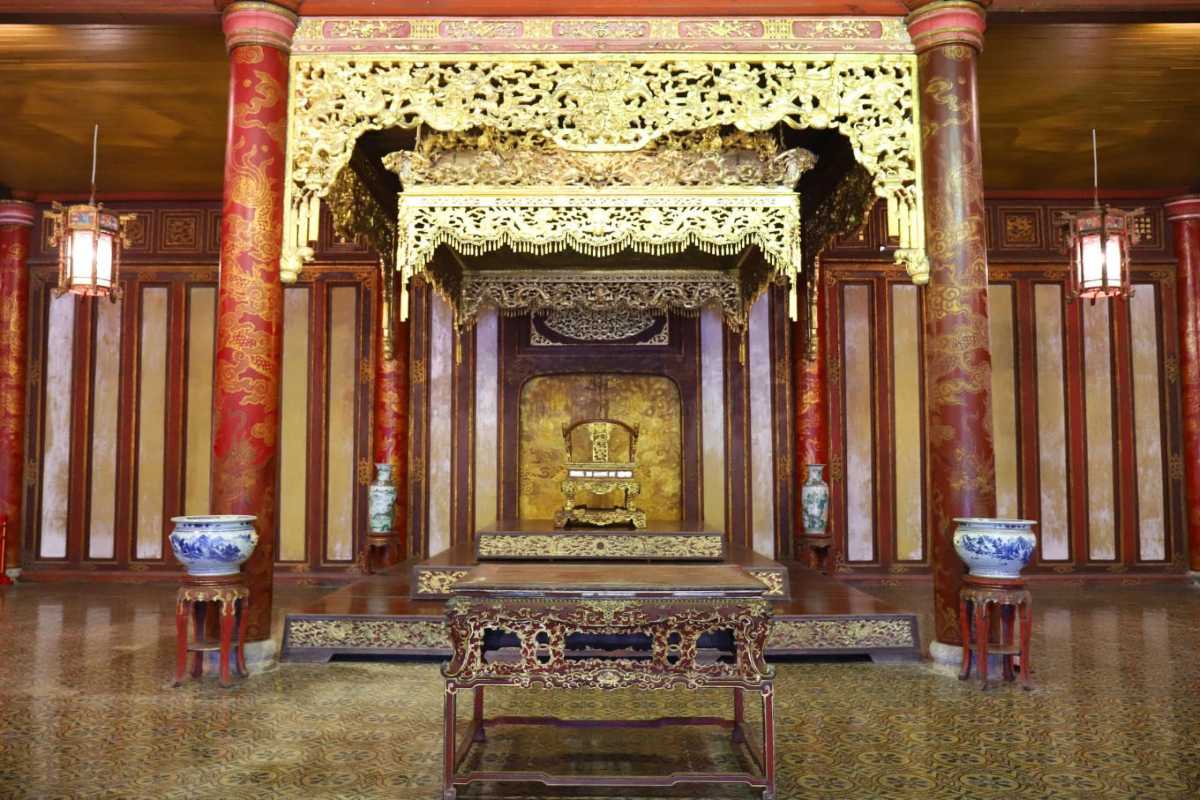
The Majestic Architecture of Long An Palace
The Long An Palace, home to the Hue Museum of Royal Antiquities, is not just an architectural masterpiece; it is a symbol of Vietnam’s imperial grandeur. Built in 1845 during the reign of Emperor Thieu Tri, the palace is a stunning example of Vietnamese royal architecture, showcasing a blend of traditional design elements and innovative engineering. The palace’s double-roof construction is a unique feature, adding both aesthetic appeal and practical benefits, such as weather protection and longevity. Constructed primarily from ironwood, a material chosen for its strength and beauty, the palace has stood the test of time, remaining one of the most well-preserved examples of Vietnamese royal palaces.
Inside, the palace is adorned with intricate carvings and decorative motifs, each representing elements of Vietnamese mythology and royal symbolism. From the dragon and phoenix motifs, which symbolize power and peace, to the elaborate wooden columns and beams, every aspect of Long An Palace speaks to the artistic skill and vision of the architects who designed it. Visitors to the palace are not only treated to an architectural wonder but also gain an appreciation for the cultural and spiritual significance embedded within its walls.

The Double-Roof Design of Long An Palace
As you approach the Hue Museum of Royal Antiquities, the striking architecture of Long An Palace immediately catches your eye. This architectural marvel is renowned for its rare double-roof design, a feature that sets it apart as one of the most exquisite examples of traditional Vietnamese architecture. Built from ironwood, a material known for its durability and beauty, the palace is a testament to the Nguyen Dynasty’s commitment to both form and function. The double-roof construction not only enhances the palace's grandeur but also plays a crucial role in the building’s longevity, shielding it from the elements and preserving its intricate details over time.
The unique roof design is more than just a structural innovation; it reflects the Nguyen Dynasty’s ambition to symbolize strength and stability. Each layer of the roof represents a tier of protection for the royal family, an embodiment of power that has withstood the test of time. Visitors often marvel at the sheer scale and detail of the palace, appreciating how the Nguyen Dynasty’s architects blended practicality with artistry to create an enduring symbol of Vietnam’s royal heritage.
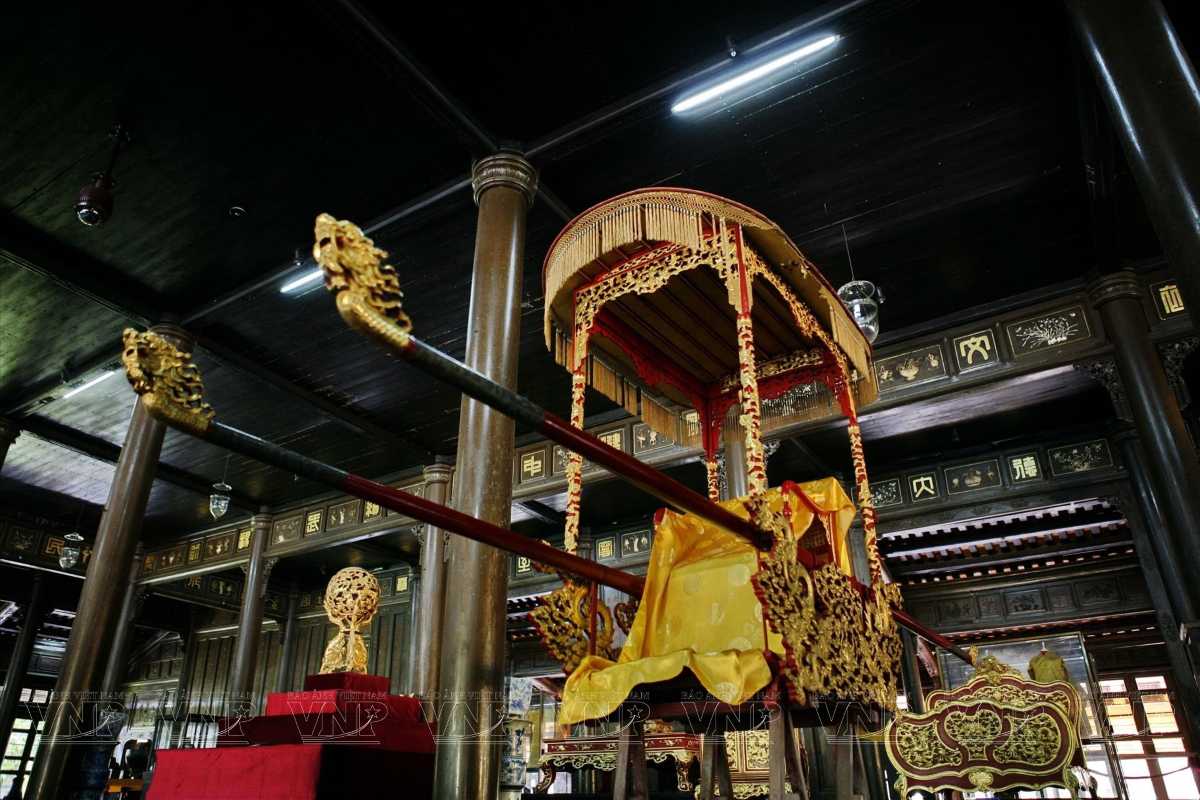
Symbolism and Mythology in Palace Decorations
Beyond the architectural brilliance of Long An Palace, its interior and exterior decorations are imbued with deep symbolism and mythology. The palace is adorned with elaborate engravings of mythical creatures like dragons, phoenixes, and tortoises, all of which carry significant meaning in Vietnamese culture. The dragon, a symbol of imperial power, represents the strength and authority of the emperor, while the phoenix is associated with prosperity and peace. Together, they create a visual narrative of balance between power and harmony, essential elements of the Nguyen Dynasty’s rule.
As you walk through the palace, you’ll notice how these symbols are seamlessly integrated into every corner of the design—from the columns and beams to the decorative motifs on the roof tiles. The dragons and phoenixes carved into the woodwork tell the story of Vietnam’s imperial past, offering visitors a glimpse into the spiritual and cultural significance that the Nguyen Dynasty placed on their surroundings. Each element serves as a reminder of the divine connection between the emperor and the cosmos, making Long An Palace not just a building, but a sacred space that reflects the spiritual beliefs of Vietnam’s rulers.
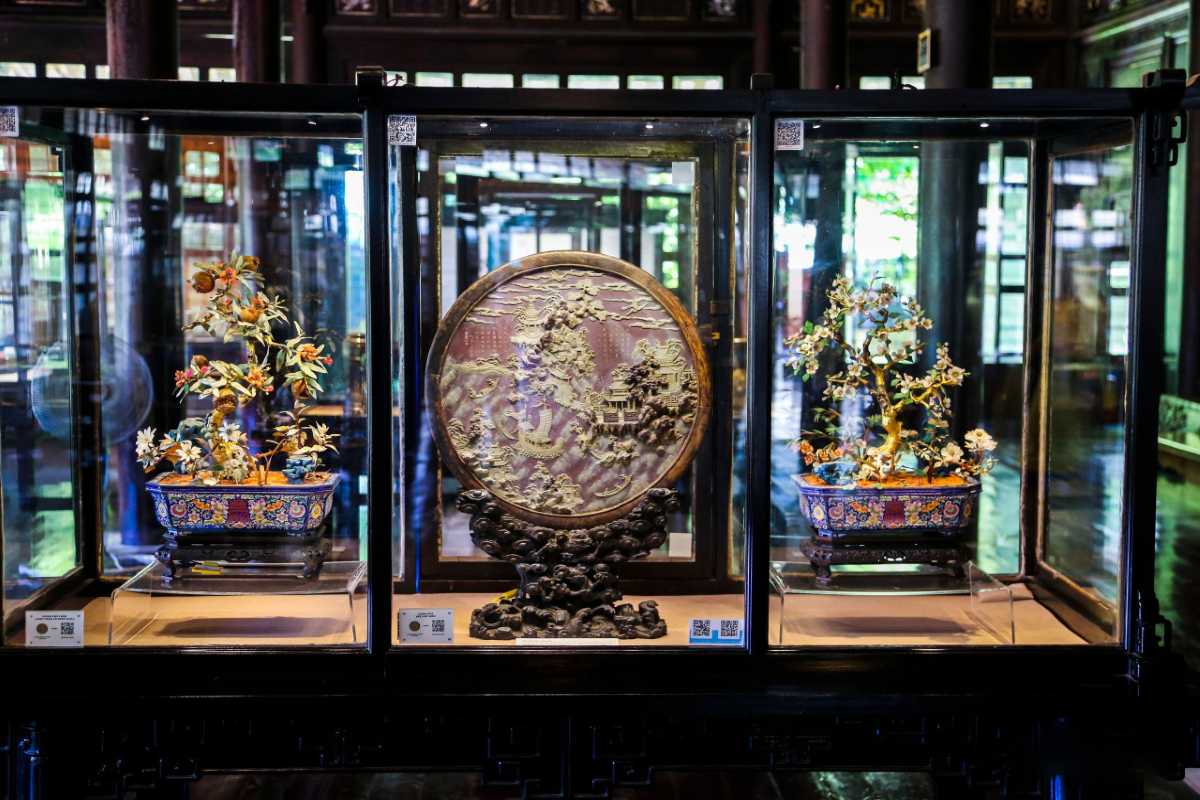
The Fascination with Ancient Royal Artifacts
No visit to the Hue Museum of Royal Antiquities is complete without admiring its vast collection of ancient royal artifacts, each one offering a glimpse into the opulence of the Nguyen Dynasty. These artifacts are more than mere relics of the past—they are works of art that reflect the luxurious lifestyle and immense power of Vietnam’s royal family. From the intricate designs of the imperial robes to the stunning golden throne where emperors once presided, the museum’s collection reveals the depth of craftsmanship and attention to detail that characterized Vietnam’s imperial court.
Among the museum’s most treasured collections is the Bleu de Hue porcelain, a rare and delicate form of blue-and-white ceramics that was commissioned exclusively for the royal family. These porcelain pieces, adorned with detailed floral and geometric patterns, are considered masterpieces of Vietnamese ceramic art. Each piece of Bleu de Hue is a testament to the artistry of the Nguyen Dynasty and their commitment to surrounding themselves with beauty and elegance. For visitors, these artifacts provide a tangible connection to the Nguyen Dynasty’s imperial legacy and an opportunity to step back in time to an era of extraordinary luxury and cultural sophistication.
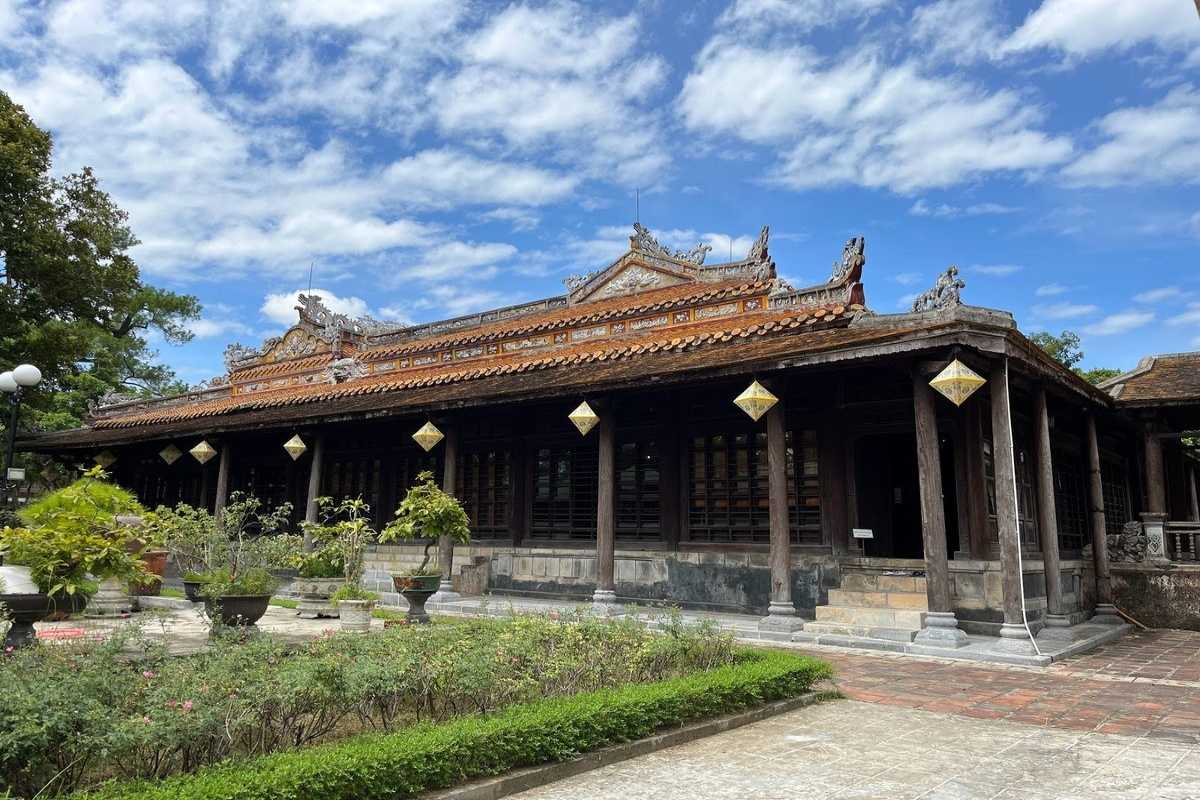
Rare Artifacts from the Nguyen Dynasty
Step inside the Hue Museum of Royal Antiquities and you'll be greeted by an extraordinary collection of rare artifacts from the Nguyen Dynasty. These items offer a window into the grandeur and sophistication of Vietnam’s imperial past. Among the most notable pieces is the golden throne, a symbol of royal power and prestige. This intricately designed throne, adorned with delicate engravings and gold leaf, was where emperors conducted their official duties, presiding over their court with grace and authority. Its presence in the museum transports visitors back to a time when the Nguyen Dynasty ruled Vietnam with both strength and benevolence.
In addition to the throne, the museum’s collection includes imperial robes that once graced the bodies of emperors and empresses. These garments are not only beautiful but are also rich in historical significance. Each robe is embroidered with symbols of royalty—dragons, clouds, and waves—all crafted with the finest materials available during the Nguyen Dynasty’s reign. These artifacts serve as powerful reminders of the luxury and status associated with the royal court, while also offering insight into the skilled craftsmanship that was highly valued during this period.
The museum’s extensive collection also includes lacquer cabinets, ceremonial items, and royal accessories, each with its own unique story. These treasures were used in the daily lives of the royal family, offering a glimpse into their personal world. The careful preservation of these items allows visitors to appreciate the artistry and craftsmanship of a bygone era, making the museum a true treasure trove of Vietnamese history.
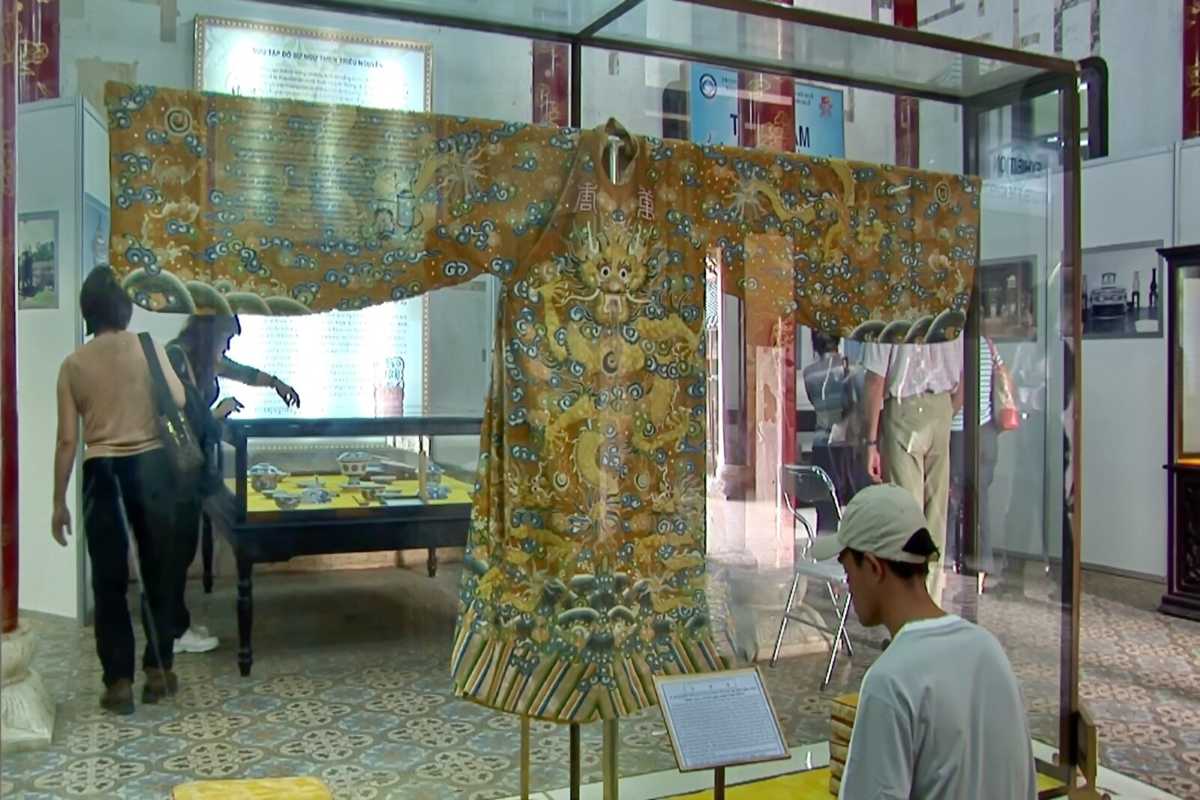
Bleu de Hue Porcelain Collection
One of the most prized collections in the Hue Museum of Royal Antiquities is the exquisite Bleu de Hue porcelain. This rare form of blue-and-white ceramics was commissioned exclusively for the Nguyen Dynasty’s royal family, making it one of the most coveted types of porcelain in Vietnamese history. The delicate designs, often featuring intricate floral patterns and royal motifs, reflect the refined taste and aesthetic preferences of the imperial court. What makes this collection even more special is that each piece was custom-made for specific members of the royal family, making them one-of-a-kind works of art.
The Bleu de Hue porcelain pieces were not only decorative but also served ceremonial and practical purposes within the royal household. From tea sets to vases, each item was crafted with the highest level of artistry, symbolizing the wealth and status of the royal family. Visitors to the museum are often mesmerized by the precision and beauty of these pieces, which have been carefully preserved over the centuries.
The collection offers a rare opportunity to connect with Vietnam’s artistic heritage and witness the craftsmanship that flourished under the Nguyen Dynasty. For those interested in the finer details of Vietnamese royal life, the Bleu de Hue porcelain collection is a must-see, providing an intimate look at the opulence and sophistication that defined the royal court.
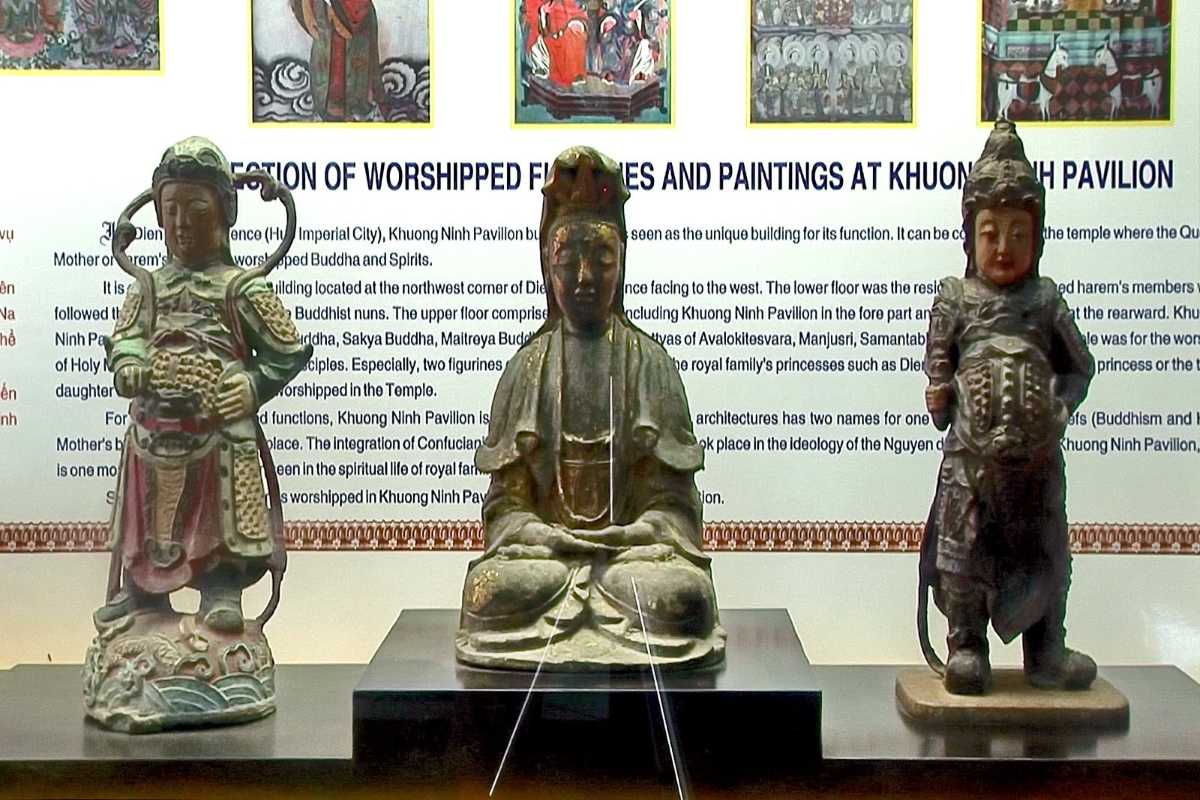
Delve into Vietnam’s Rich Past Through Rare Artifacts
Vietnam’s imperial past comes alive at the Hue Museum of Royal Antiquities, where an impressive array of artifacts unveils the grandeur of the Nguyen Dynasty. Each piece in the museum’s collection holds a story of power, prestige, and artistry, offering visitors a rare opportunity to connect with the royal history that shaped Vietnam. As you explore these treasures, you’ll discover not only the personal belongings of emperors and empresses but also the intricate craftsmanship that characterized the Nguyen Dynasty’s rule. Whether you’re drawn to the majestic golden throne or the finely embroidered imperial robes, the museum offers a window into a world of imperial splendor that once defined the lives of Vietnam’s rulers.
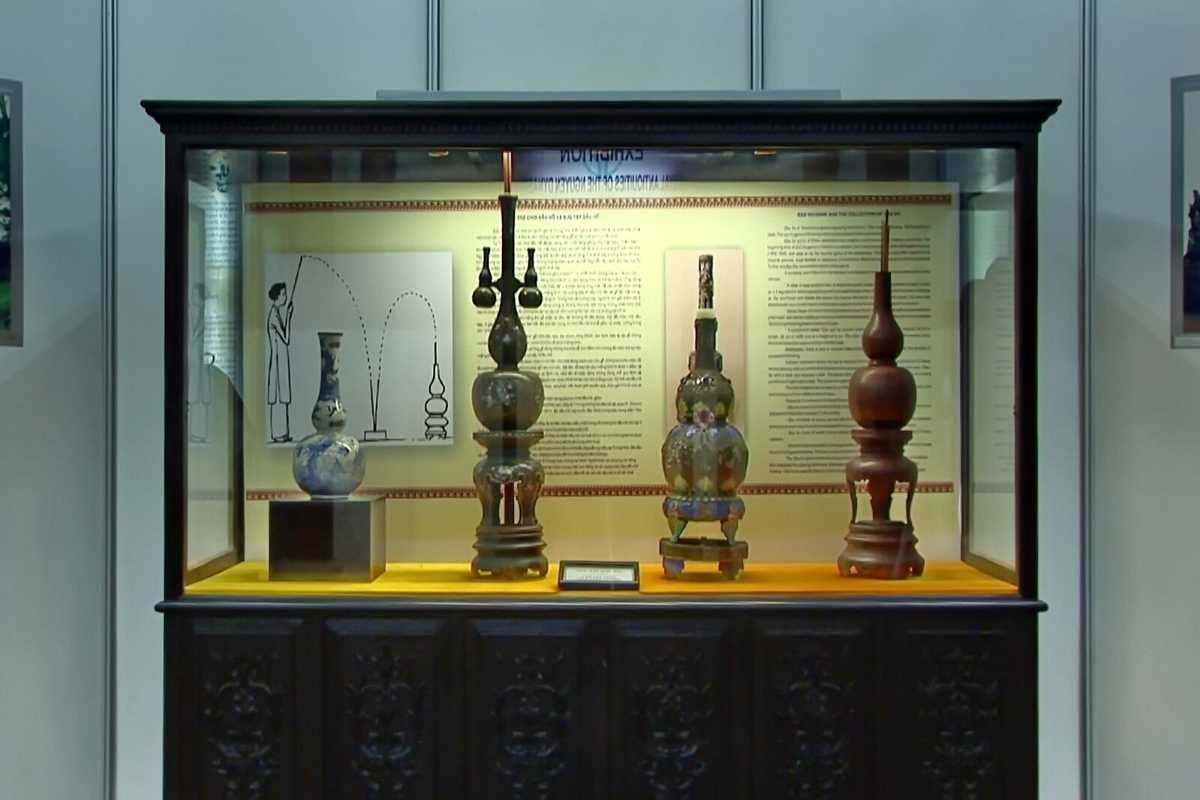
The Golden Throne: A Symbol of Royal Power
At the heart of the museum’s collection stands the golden throne, an iconic symbol of the Nguyen Dynasty’s rule. Intricately carved and lavishly adorned with gold leaf, this throne is much more than a seat—it is a representation of imperial authority and the prestige of Vietnam’s emperors. The throne's detailed carvings depict mythical creatures such as dragons, emphasizing the emperor’s divine right to rule, while the use of gold symbolizes wealth, power, and royal magnificence.
Standing before this relic, visitors can’t help but feel the weight of history. The throne reflects the opulence of the imperial court, and its presence within the museum serves as a reminder of the Nguyen Dynasty’s dominance during Vietnam’s imperial era. It’s a piece that draws people into the heart of Vietnam’s royal legacy, offering a tangible connection to the rulers who once commanded respect and reverence from their subjects.
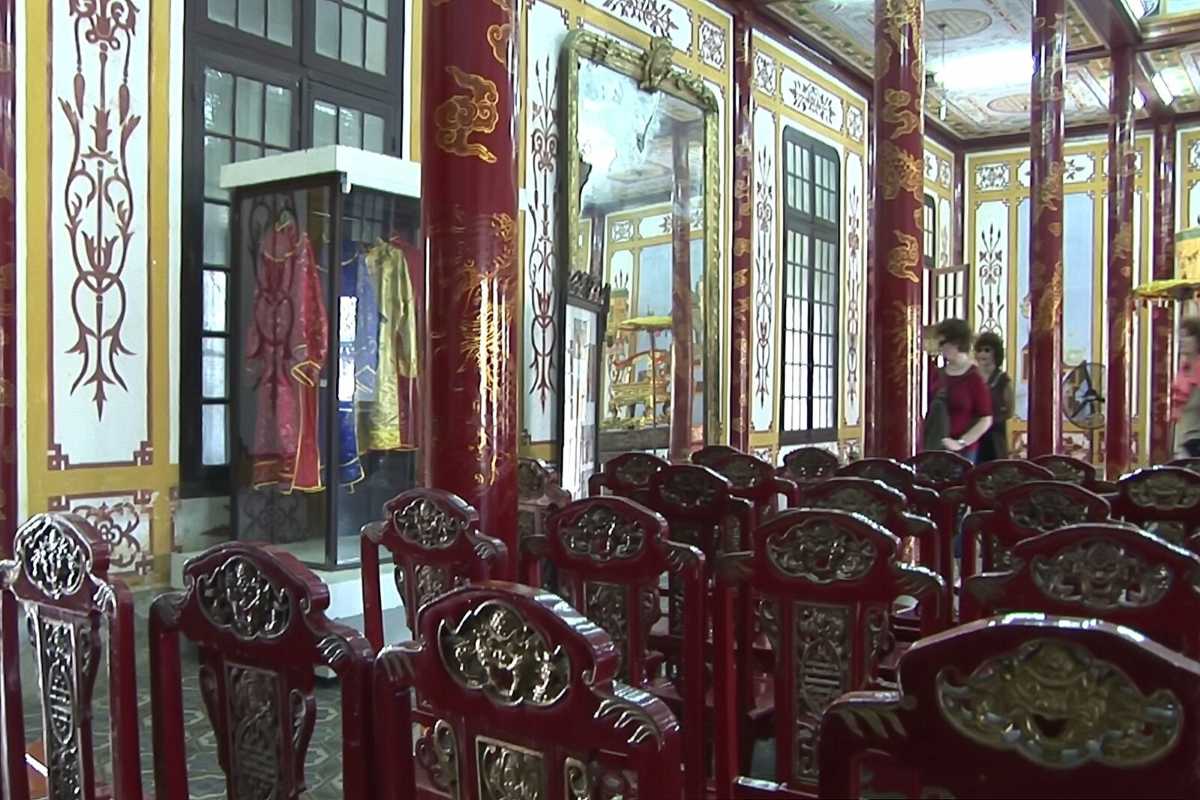
The Imperial Robes: Intricate Craftsmanship
The imperial robes on display at the Hue Museum of Royal Antiquities are masterpieces of intricate design, embodying the craftsmanship and attention to detail that defined the Nguyen Dynasty’s royal court. These lavish garments were worn by emperors and empresses during significant ceremonial occasions, and each stitch tells a story of power, status, and tradition. The embroidery on these robes features symbolic motifs such as dragons, phoenixes, and clouds—icons representing strength, peace, and the celestial mandate to rule.
The use of vibrant silk threads and luxurious fabrics further enhances the aura of grandeur surrounding these robes. For visitors, seeing the fine details of these garments up close allows them to appreciate the immense skill of the artisans who created them. More than just clothing, these robes are symbols of Vietnam’s royal heritage, and they continue to captivate all who visit the museum.
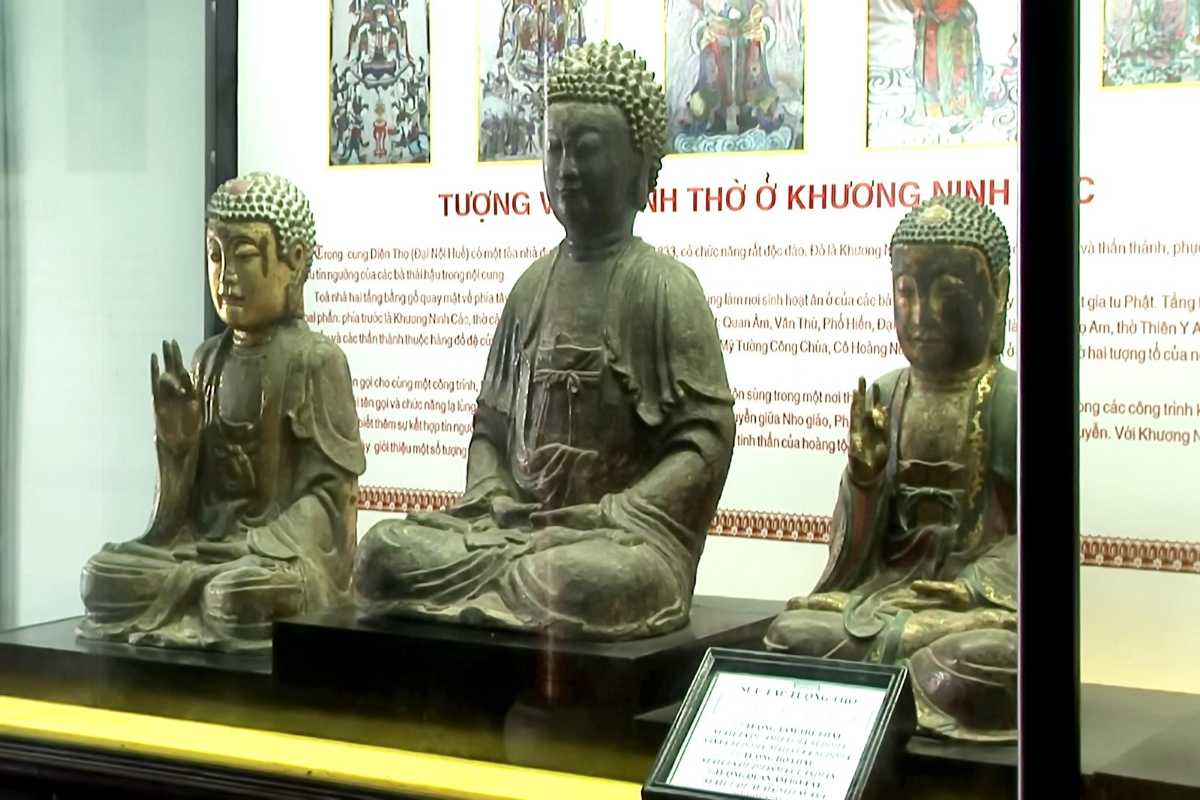
The Artisans Behind the Artifacts
The true beauty of the Hue Museum of Royal Antiquities lies not only in the grandeur of the artifacts themselves but in the masterful craftsmanship of the artisans who created them. Each piece, from the finely detailed imperial robes to the exquisitely carved golden throne, is a testament to the skills and dedication of the Nguyen Dynasty’s royal craftsmen. These artisans, often working in specialized workshops under royal patronage, employed traditional techniques that had been passed down through generations, using only the finest materials to produce items worthy of the emperor’s court.
These royal craftsmen were more than mere artisans—they were custodians of Vietnam’s cultural heritage, responsible for creating objects that symbolized power, prestige, and the divine right of the emperor to rule. By understanding the painstaking work that went into crafting each item, visitors gain a deeper appreciation for the historical significance and artistic merit of these artifacts. The museum’s collection serves as a bridge between the present and the past, allowing us to witness the incredible skill and artistry that defined the Nguyen Dynasty’s reign.
Traditional Techniques Used by Royal Craftsmen
The artisans who crafted the Nguyen Dynasty’s artifacts were masters of their trade, using traditional techniques that had been passed down through generations. These craftsmen worked with the finest materials available—silk, gold, ironwood, and lacquer—to create the opulent items that filled the royal palace. Whether crafting the golden throne, embroidering imperial robes, or shaping delicate ceramics, each artisan played a vital role in upholding the grandeur of the royal court.
The techniques used were labor-intensive and required exceptional skill. For example, imperial robes were often embroidered with up to a hundred thousand stitches, each one perfectly placed to form intricate patterns that represented the emperor’s divine authority. The lacquer cabinets used in the palace were created through a painstaking process that involved multiple layers of lacquer, each one meticulously sanded and polished to perfection. These techniques, while time-consuming, resulted in pieces that were not only beautiful but also durable, many of which remain well-preserved today, offering modern visitors a glimpse into the royal artisans' world.
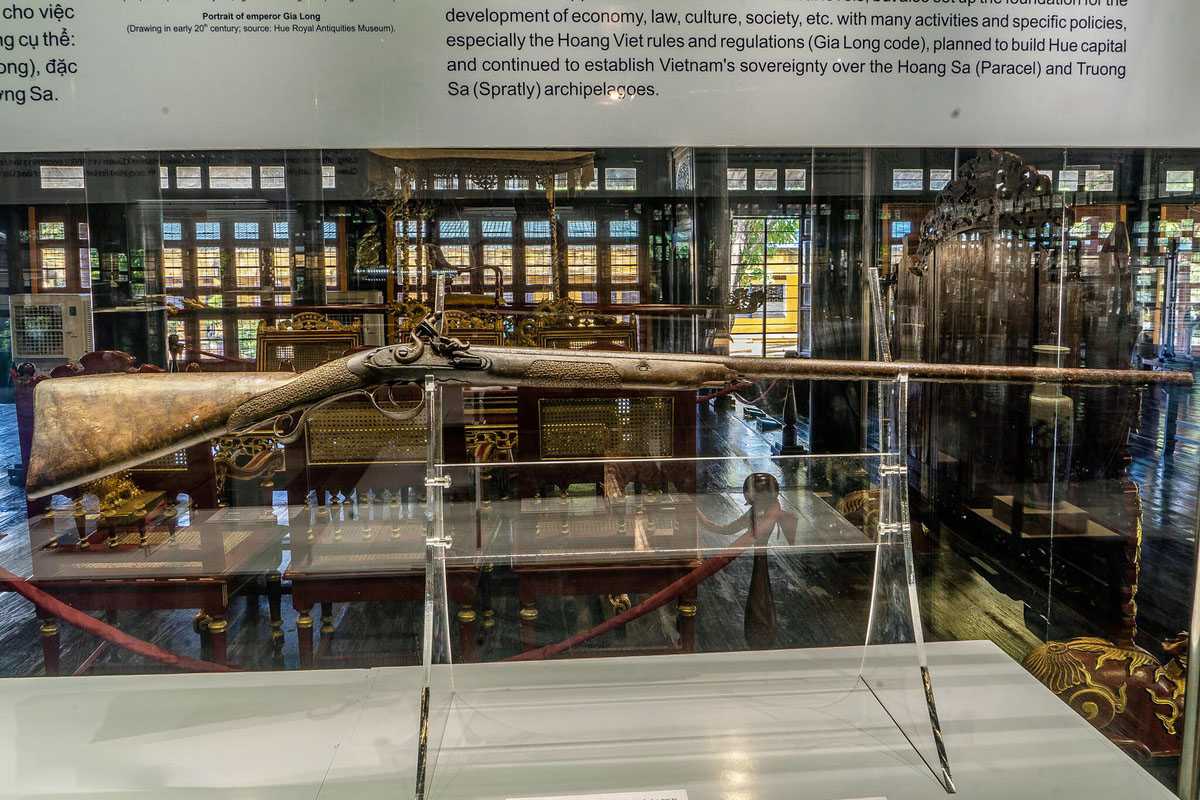
Guided Tours: Unlocking the Stories Behind the Treasures
While the artifacts on display at the Hue Museum of Royal Antiquities are awe-inspiring in their own right, their true stories often remain hidden without proper context. This is where the museum’s guided tours become an essential part of the experience. Led by knowledgeable experts in Vietnamese history, these tours offer visitors the chance to dive deeper into the rich historical narratives behind each artifact. From the ceremonial significance of the golden throne to the hidden symbolism embroidered on the imperial robes, the guides reveal fascinating details that might otherwise go unnoticed.
For those eager to gain a fuller understanding of the Nguyen Dynasty’s royal legacy, joining a guided tour is the best way to unlock the hidden stories that each item in the museum holds. Whether you’re fascinated by the artistry of the Bleu de Hue porcelain collection or curious about the symbolism of the dragon and phoenix motifs, the museum’s expert guides bring these ancient treasures to life, offering visitors a richer, more immersive journey into Vietnam’s imperial past.
What You’ll Learn on a Guided Tour
A visit to the Hue Museum of Royal Antiquities is enriched by the expertise of its knowledgeable guides, who bring the artifacts to life with fascinating stories and historical insights. On a guided tour, visitors can dive deeper into the significance of the Nguyen Dynasty’s treasures. For instance, you’ll learn about the ceremonial functions of the golden throne, the symbolism behind the embroidery on the imperial robes, and the elaborate processes that went into creating the royal Bleu de Hue porcelain collection.
The guides at the museum are experts in Vietnam’s imperial history, and their narratives help visitors gain a fuller understanding of the cultural and political significance of the artifacts. By the end of the tour, you’ll have a richer appreciation for the craftsmanship that went into each piece and the legacy of the Nguyen Dynasty.
Benefits of Joining a Group Tour
While exploring the museum on your own is certainly enjoyable, joining a group tour offers added benefits that make the experience even more rewarding. Group tours are led by expert guides who provide in-depth commentary on the artifacts, giving you insights that you might otherwise miss. The guides often highlight lesser-known facts about the Nguyen Dynasty, providing context that enhances your understanding of Vietnam’s royal past.
Additionally, group tours offer opportunities for interaction and discussion with fellow visitors, creating a more dynamic and engaging experience. Whether you’re a history buff or simply curious about Vietnam’s royal heritage, a guided tour ensures that you get the most out of your visit to the Hue Museum of Royal Antiquities.
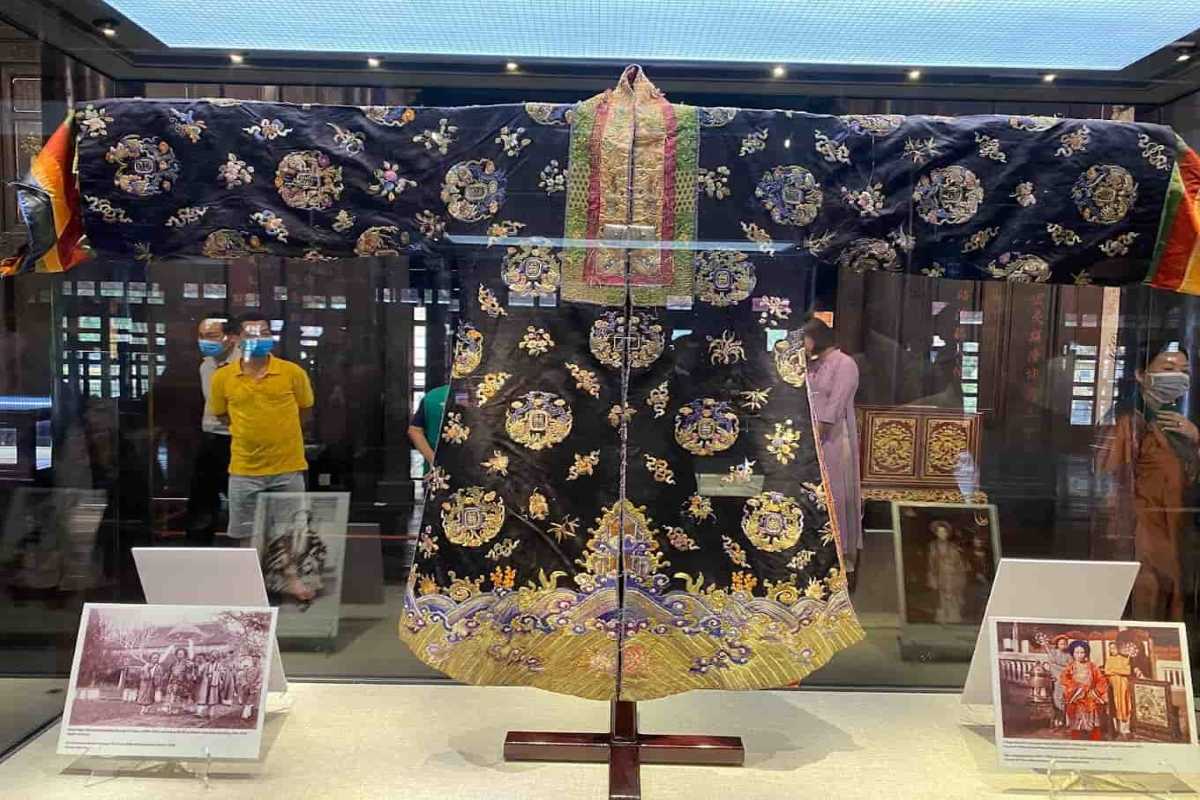
Plan Your Perfect Visit to Hue Museum
Visiting the Hue Museum of Royal Antiquities is an opportunity to immerse yourself in Vietnam’s rich royal history. However, planning ahead can help you maximize your experience. From choosing the best times to visit to knowing what to expect from guided tours, a little preparation ensures that your visit is both enjoyable and informative. The museum offers a range of options for all types of visitors, whether you prefer to explore on your own or benefit from the knowledge of a guide.
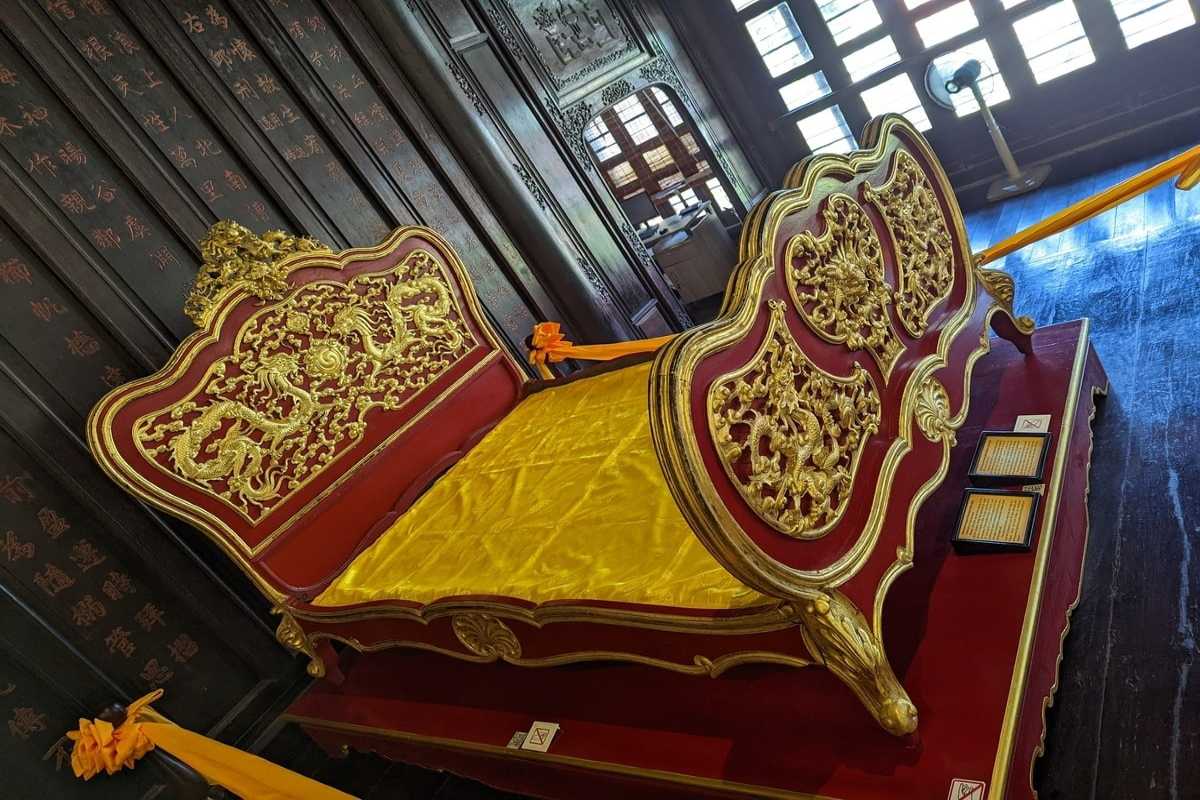
Best Times to Visit the Museum
If you’re hoping to avoid crowds and enjoy a peaceful exploration of the museum, plan your visit for the early morning or late afternoon. These quieter times allow you to take in the exhibits at your own pace without the distractions of large groups. Additionally, the weather in Hue can be hot and humid, especially during the summer months, so visiting during these cooler parts of the day makes for a more comfortable experience.
Spring and summer are the ideal seasons for visiting, offering pleasant weather that’s perfect for both indoor exploration and strolling around the Imperial City after your visit to the museum. By choosing the right time to visit, you’ll ensure that you have plenty of space to fully appreciate the Nguyen Dynasty’s treasures.
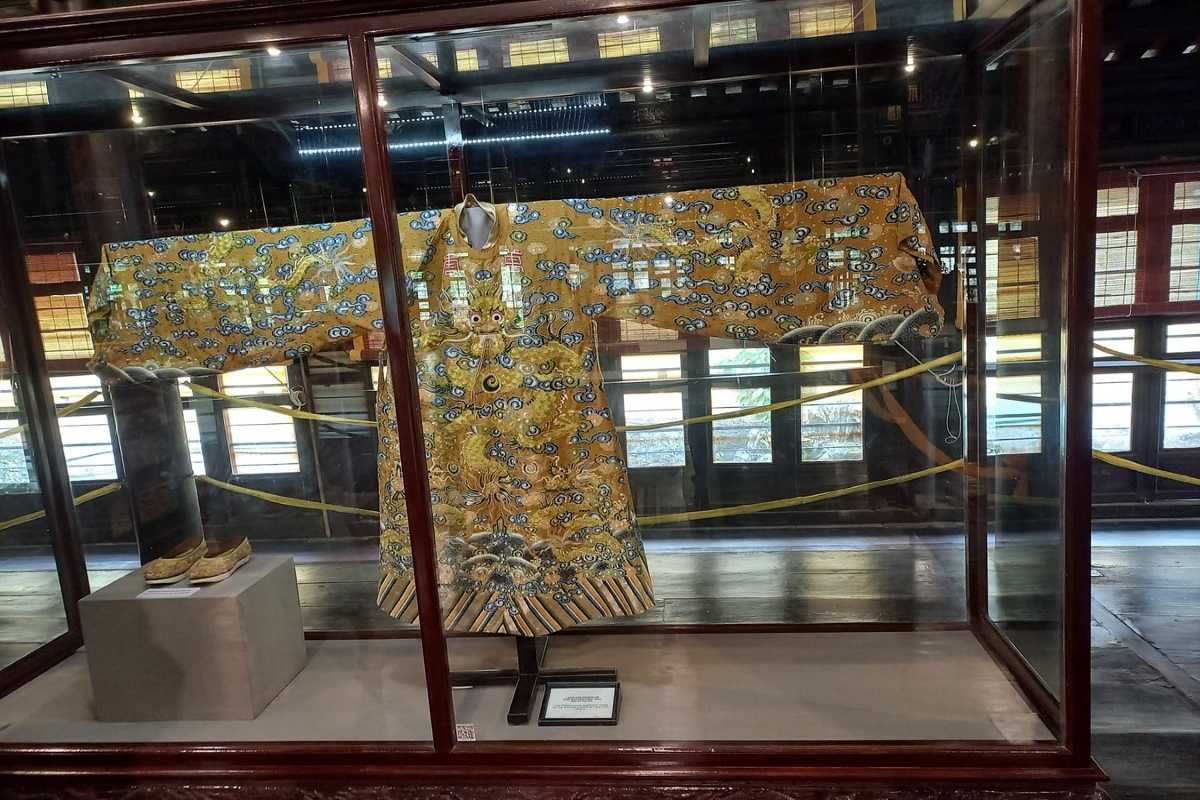
Practical Tips for Visiting
To make the most of your visit to the Hue Museum of Royal Antiquities, there are a few practical considerations to keep in mind. Admission tickets cost 150,000 VND for adults and 50,000 VND for children, making the museum an affordable and accessible experience for families and groups. If you’re interested in learning more about the historical context of the artifacts, consider joining one of the museum’s guided tours, which are available for an additional fee.
Getting around Hue is easy thanks to the availability of motorbike rentals and taxis, which make it simple to travel from the city center to the museum. With its convenient location and affordable entry, visiting the museum is a must-do for anyone looking to deepen their understanding of Vietnam’s imperial history.
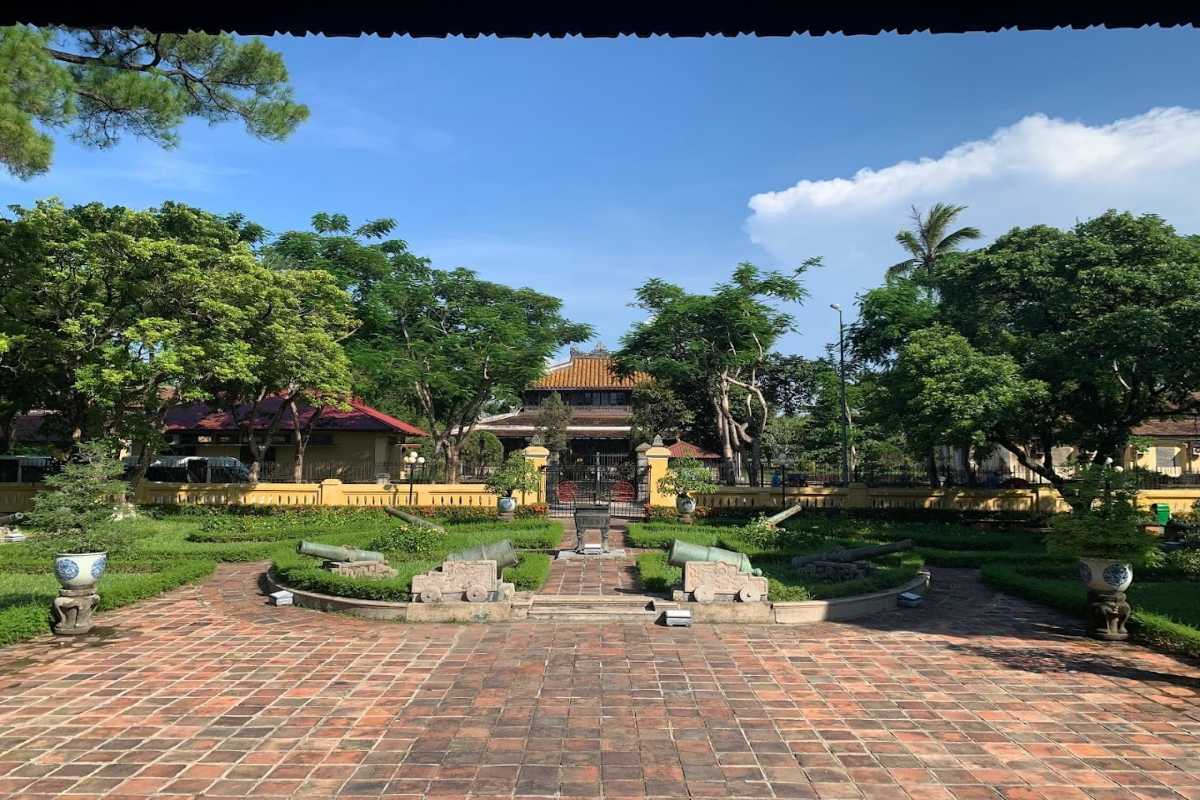
Guided Tours: Unlocking the Stories Behind the Treasures
The Hue Museum of Royal Antiquities offers guided tours that provide a deeper insight into the significance of its collections. Led by knowledgeable guides, these tours take visitors on a journey through the Nguyen Dynasty’s royal past, offering fascinating facts and historical context for the museum’s artifacts.
What You’ll Learn on a Guided Tour
On a guided tour, visitors can expect to learn about the symbolic meanings behind the museum’s most notable pieces. For example, guides will explain the significance of the dragon and phoenix motifs found on many of the imperial robes and how these symbols were used to convey the emperor’s divine authority. Visitors will also learn about the ceremonial use of the golden throne and the detailed process of creating the royal Bleu de Hue porcelain.
The guides’ knowledge and enthusiasm for the subject make these tours an enriching experience, offering visitors a deeper connection to the royal history preserved within the museum.
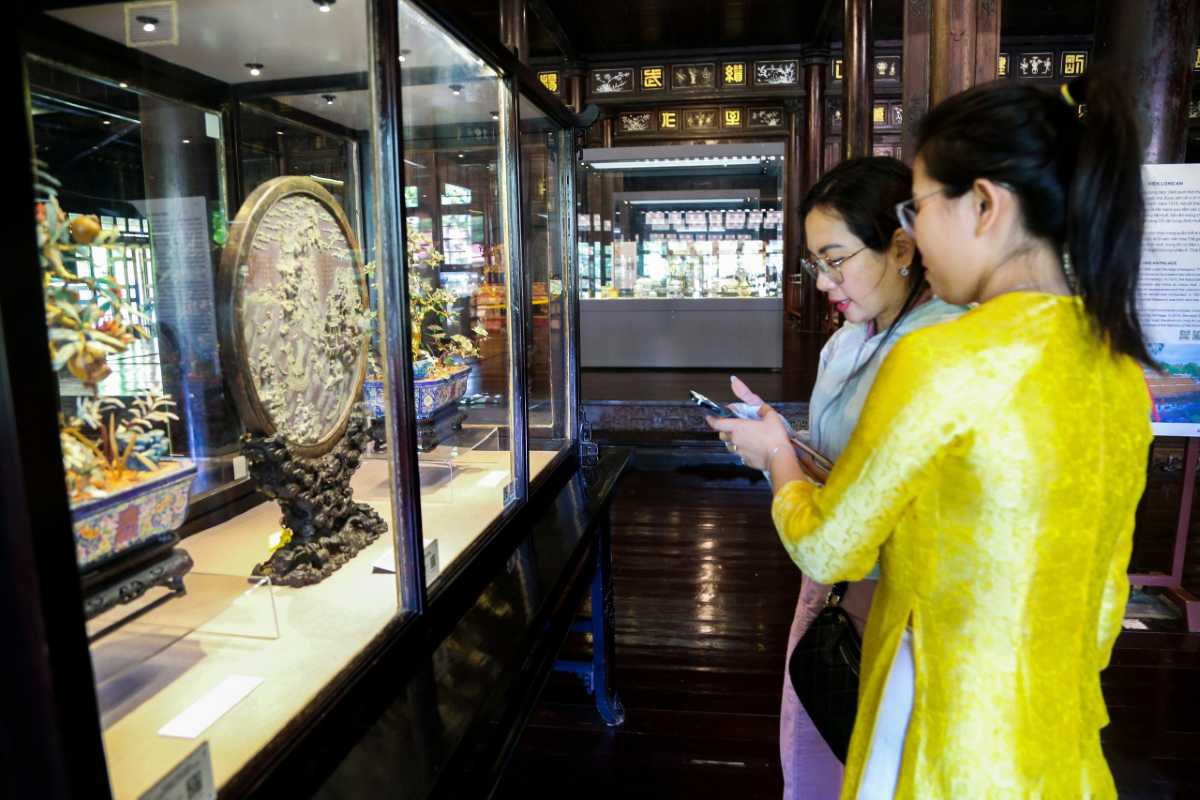
Why You Shouldn’t Miss Visiting Hue Museum
Stepping into the Hue Museum of Royal Antiquities offers more than just a glance at Vietnam’s imperial past—it provides an immersive experience that brings you closer to the rich history and culture of the Nguyen Dynasty. This museum, housed in the architectural wonder of Long An Palace, invites visitors to discover the personal stories behind the royal artifacts, making it a place where history comes to life. As you explore, you’ll find yourself drawn to the elegance and power embedded in every piece, from the grand golden throne to the detailed craftsmanship of the imperial robes.
The museum is a must-visit for travelers of all kinds, offering a unique combination of history, culture, and storytelling that allows you to engage with Vietnam’s noble heritage in a way that is both personal and profound. Whether you’re a solo traveler, a family looking for an educational experience, or a couple seeking a romantic getaway, the Hue Museum has something to offer everyone.
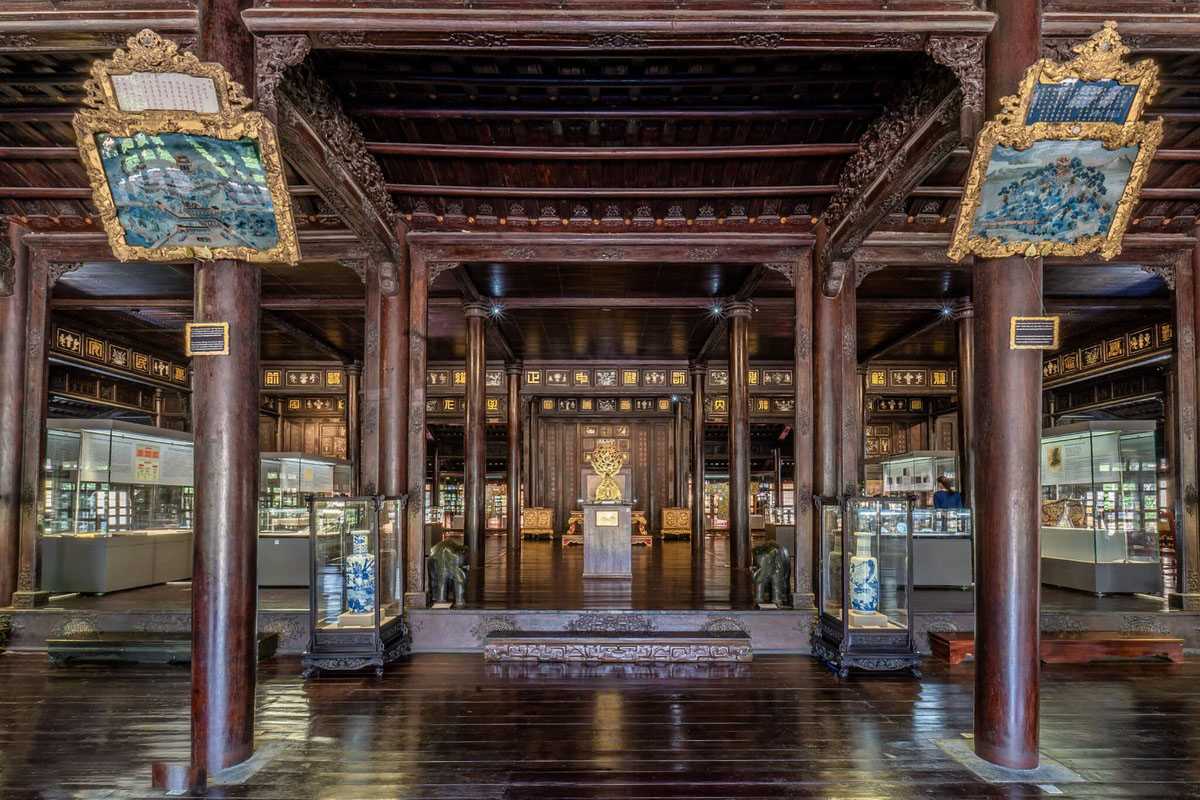
An Immersive Experience in Vietnam’s Royal History
Imagine standing before the centuries-old golden throne, once the seat of emperors who ruled Vietnam with grace and authority. The intricate carvings and gold leaf that adorn this throne reflect the power and prestige of the Nguyen Dynasty, allowing visitors to feel a personal connection to the past. This is just one of the many awe-inspiring experiences you’ll have at the Hue Museum of Royal Antiquities.
Beyond just viewing the artifacts, the museum’s interactive exhibits and detailed explanations provide a deeper understanding of the historical context behind each piece. The experience of walking through the museum’s halls, surrounded by the tangible history of Vietnam’s royal past, makes visitors feel as if they’ve traveled back in time to a world of emperors, courtiers, and artisans.
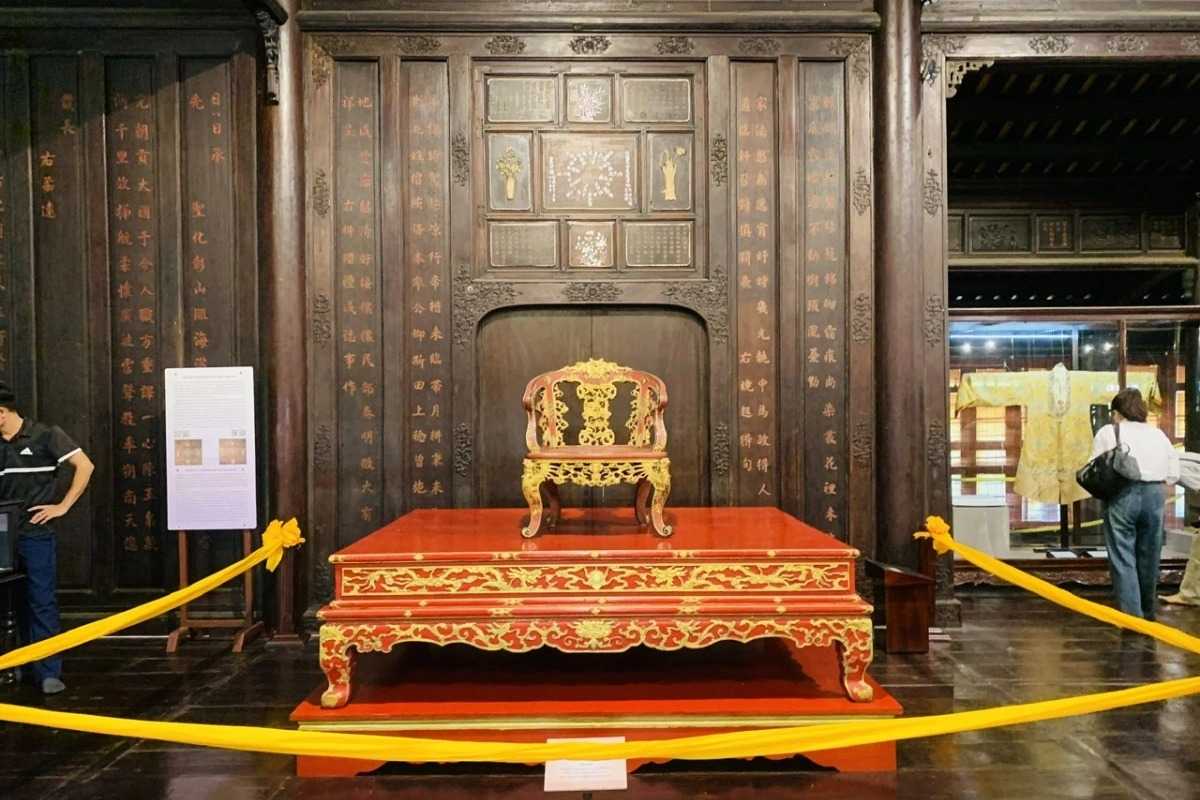
Interactive Exhibits and Personal Stories
The Hue Museum goes beyond traditional museum displays by offering interactive exhibits that engage visitors in the stories behind each artifact. Personal accounts, family stories, and historical anecdotes help bring the royal relics to life, allowing visitors to see them not just as relics of the past, but as integral parts of Vietnam’s cultural narrative.
You’ll learn about the Nguyen Dynasty’s royal family through interactive displays that share intimate details of their daily lives. The carefully curated exhibits allow visitors to explore Vietnam’s imperial history in a way that is both educational and emotionally engaging. These stories bridge the gap between the past and present, creating a sense of connection that leaves a lasting impression.
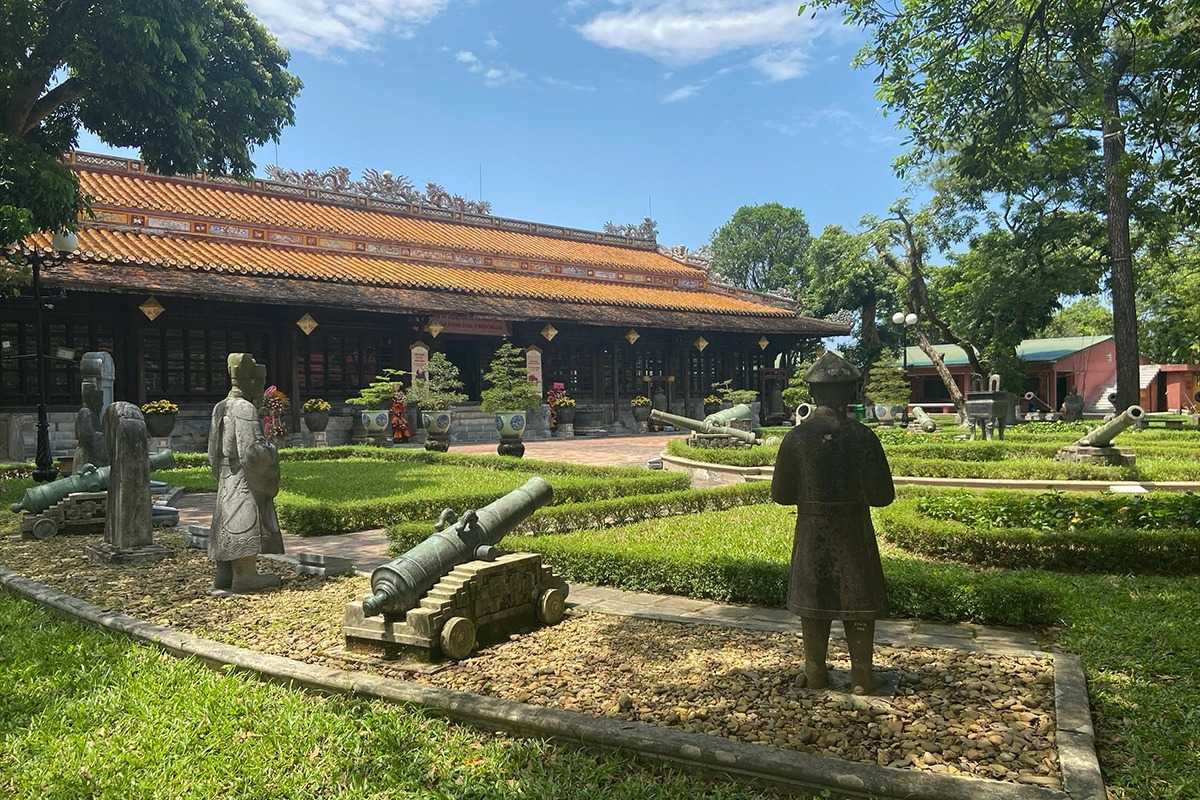
Testimonials from Visitors
The experiences shared by those who have visited the Hue Museum of Royal Antiquities speak volumes about its captivating allure and immersive journey into Vietnam’s royal past. Each visitor brings a unique perspective, whether traveling with family, exploring solo, or celebrating a special occasion with a loved one. These testimonials reflect the diverse ways the museum resonates with its guests, from the wonder sparked in children learning about imperial history for the first time, to the awe experienced by couples marveling at the Bleu de Hue porcelain. Hearing from those who have walked the same halls and stood before the golden throne not only builds trust in the museum's offerings but also inspires future visitors to make their own memories in this historic space. Whether you're seeking an educational adventure or a romantic escape, the personal stories shared by past visitors will make you eager to embark on your own journey through Vietnam’s imperial heritage.
Stories from Families, Couples, and Solo Travelers
Many visitors to the Hue Museum leave with memories that they cherish long after their trip has ended. Families rave about the museum’s ability to keep children entertained while also offering educational insights. “Our kids loved learning about the imperial robes and the colorful dragon symbols. It sparked their curiosity about history,” one family shared after their visit. For couples, the museum’s serene setting and beautiful artifacts provide a romantic backdrop for an unforgettable experience. “Walking through the Long An Palace gardens and admiring the delicate Bleu de Hue porcelain was the perfect way to spend our afternoon in Hue,” said one couple celebrating their anniversary.
Solo travelers also find the museum to be a rewarding destination, with many commenting on the unique opportunity to explore Vietnam’s history at their own pace. “As a solo traveler, I appreciated how immersive the experience was. I felt like I was part of the story, especially when learning about the artisans who crafted the golden throne,” one traveler mentioned in a review. These personal testimonials reflect the diverse range of experiences the museum offers, making it a must-visit for anyone exploring Vietnam’s royal history.

Exclusive Highlights for Travelers
Whether you’re traveling with family, as a couple, or on your own, the Hue Museum of Royal Antiquities has exclusive experiences tailored to meet your needs. From family-friendly exhibits that inspire young minds to romantic settings that offer couples a peaceful retreat, the museum provides an array of activities that go beyond just viewing artifacts. Every corner of the museum reveals something new and exciting, ensuring that all visitors leave with lasting memories.

Family-Friendly Experiences
For families, the Hue Museum offers an engaging and educational adventure. Children are captivated by the museum’s interactive exhibits, which make learning about Vietnam’s royal history fun and accessible. The royal artifacts, such as the imperial robes and lacquer cabinets, spark curiosity in young minds, allowing them to imagine the lives of emperors and their families. Parents appreciate the rich educational value, knowing that their children are gaining a deeper understanding of Vietnam’s culture and history.
The museum’s thoughtfully designed exhibits allow families to explore at their own pace, making it easy for children to engage with the artifacts in a way that feels exciting and immersive. With plenty of open spaces to explore and interactive displays to keep little ones entertained, the Hue Museum is an ideal stop for families visiting the region.

Romantic Getaways in Hue
For couples seeking a romantic escape, the Hue Museum of Royal Antiquities provides a serene and enchanting setting. Strolling through the palace gardens, hand in hand, while admiring the intricately detailed Bleu de Hue porcelain, couples can enjoy the quiet beauty and timeless elegance that the museum has to offer. The ambiance of the Long An Palace, combined with the rich history of Vietnam’s royal past, makes it a perfect destination for couples looking to create unforgettable memories.
The museum’s collection of royal treasures, set against the backdrop of its beautiful architecture and peaceful gardens, provides an atmosphere of romance and reflection. Couples often find that the museum offers a peaceful retreat from the hustle and bustle of daily life, making it a popular destination for anniversaries, honeymoons, and special occasions.

Special Packages and Discounts
Visiting the Hue Museum of Royal Antiquities offers not only a rich cultural experience but also a range of exclusive offers designed to make your visit even more enjoyable and affordable. Whether you're traveling with family, friends, or a larger group, the museum provides several special packages and discounted rates that cater to different needs and preferences. These packages combine convenience and value, allowing you to immerse yourself in Vietnam’s royal history without breaking the bank. By taking advantage of these offers, you can ensure that your trip is both memorable and budget-friendly.

How to Access Exclusive Offers
Families and large groups can unlock significant savings by booking their museum visits through the museum’s official website or partnering with local travel agents. These channels often provide discounted group rates that reduce the overall cost of entry, making it easier for families and large groups to explore the museum together. Additionally, special promotions—such as free guided tours or discounted tickets when booking in advance—are frequently available. Visitors can also check for seasonal deals, which may include bundled tickets for multiple attractions within Hue, offering further savings and a comprehensive cultural experience.
For visitors who plan ahead, booking through these channels ensures you’ll have access to the best exclusive offers available, making your journey into Vietnam’s royal past not only enriching but also cost-effective.

Plan the Perfect Visit
A visit to the Hue Museum of Royal Antiquities is a journey through Vietnam’s rich imperial past, and with a little preparation, you can make the most of this unforgettable experience. Whether you're a history buff eager to explore the treasures of the Nguyen Dynasty or a casual traveler looking to immerse yourself in Vietnamese culture, planning ahead ensures that you enjoy the museum to its fullest. From selecting the ideal time to visit for a more personal experience to taking advantage of guided tours that unlock deeper insights into the artifacts, a well-organized visit guarantees that you won’t miss any of the museum's highlights. Follow our practical tips to maximize your time and create lasting memories as you explore one of Vietnam's most iconic cultural destinations.
How to Maximize Your Museum Experience
To ensure you get the most out of your visit to the Hue Museum of Royal Antiquities, it’s important to plan strategically. The museum is a popular destination, and timing can make a significant difference in the quality of your experience. For the best visit, aim to arrive early in the morning or later in the afternoon when the crowds are lighter, allowing you to explore the museum at a more leisurely pace. The museum’s exhibits are vast, and taking a guided tour is highly recommended to gain a deeper understanding of the Nguyen Dynasty’s artifacts and their cultural significance.
Focus on key exhibits such as the golden throne and the Bleu de Hue porcelain collection, but also take time to appreciate the museum’s interactive displays, which provide insight into the lives of Vietnam’s royal family. By planning your visit around these highlights, you can ensure a richer and more immersive experience, making your trip to Hue both educational and enjoyable.

Plan Your Visit Today: Experience the Best of Hue Museum
Planning your visit to the Hue Museum of Royal Antiquities has never been easier. With simple online booking options and a variety of guided tours available, you can create a personalized experience that suits your schedule and interests. Whether you're visiting solo, with family, or as part of a larger group, the museum offers flexible options to enhance your journey through Vietnam’s imperial history.

How to Book Your Tickets
Purchasing tickets for the Hue Museum of Royal Antiquities is straightforward. Tickets can be bought online through the museum’s official website, allowing you to skip the long lines and secure your spot in advance. By booking online, you can also access special deals on guided tours, which offer in-depth insights into the Nguyen Dynasty’s royal treasures. On the day of your visit, you can simply present your e-ticket at the entrance and start exploring the museum’s vast collection without any delays. Booking in advance not only saves time but also ensures you’ll have access to special packages that enhance your museum experience.

Explore Hue with Ease
The Hue Museum of Royal Antiquities is conveniently located within the Imperial City, making it easily accessible whether you’re traveling solo or with a group. For those seeking a hassle-free experience, local services offer guided tours that include transportation and expert commentary, providing a seamless way to explore both the museum and the surrounding historical landmarks. These tours are ideal for first-time visitors who want to maximize their time in Hue and gain a deeper understanding of the region’s royal heritage.
Whether you choose a private tour or join a group, there are options to suit all types of travelers, ensuring that your visit to the museum is both convenient and informative. The museum’s proximity to other popular attractions, such as the Thien Mu Pagoda and the Imperial City, makes it easy to incorporate a visit to multiple sites in one day, giving you a comprehensive view of Vietnam’s rich history.

Special Packages and Discounts
For those traveling with family or in larger groups, the museum offers special packages that bundle tickets with other nearby attractions. These packages provide excellent value, allowing visitors to explore the Imperial City or take a boat ride along the Perfume River while also enjoying the treasures of the Hue Museum of Royal Antiquities. Families can take advantage of discounted group rates, making it easier to explore the cultural and historical landmarks of Hue without overspending.
By choosing a package that suits your needs, you can create a well-rounded and budget-friendly itinerary that highlights the best of Hue. Whether it’s a family day out or a group trip, the special packages offered by the museum make it easy to enjoy an unforgettable journey through Vietnam’s royal heritage.

Explore Vietnam’s Royal Legacy at Hue Museum
The Hue Museum of Royal Antiquities offers a rare opportunity to step back in time and experience the grandeur of Vietnam’s royal legacy. As the former imperial capital, Hue was home to the Nguyen Dynasty, Vietnam’s last and most illustrious royal family. The museum, nestled within the magnificent Long An Palace, houses an extraordinary collection of artifacts that reveal the splendor, artistry, and power of the imperial court. From the intricately detailed golden throne to the beautifully preserved imperial robes, each piece tells a story of a bygone era that shaped Vietnam’s cultural and political history. Whether you're a history enthusiast or a curious traveler, the museum offers an immersive experience that brings Vietnam’s royal heritage to life, making it a must-visit destination for anyone looking to connect with the nation’s rich past.

A Journey Through Time
Visiting the Hue Museum of Royal Antiquities is more than just a trip to a museum—it’s a step back in time to experience the grandeur and significance of Vietnam’s royal history. Through its carefully curated collection of rare artifacts, visitors are offered a glimpse into the lives of the emperors, empresses, and royal artisans who shaped the Nguyen Dynasty. The museum’s exhibits, from the golden throne to the intricate imperial robes, provide an intimate look at the cultural, artistic, and political achievements that defined an era of imperial rule.
By exploring the museum, visitors not only engage with the Nguyen Dynasty’s legacy but also deepen their understanding of Vietnam’s rich cultural heritage. Whether you're a history enthusiast or simply curious about the past, the Hue Museum promises an enriching experience that connects you to the heart of the nation’s royal past.

Don’t Miss Out—Plan Your Visit Today!
The Hue Museum of Royal Antiquities offers a one-of-a-kind experience that immerses you in the grandeur of Vietnam’s imperial history. With its guided tours, exclusive offers, and convenient access to other historical sites, there’s no better time to plan your visit. Whether you're traveling solo, with a partner, or as part of a group, the museum offers flexible options to suit your needs. Take advantage of discounted family packages or book a private tour to make the most of your visit.
Now is the perfect time to explore this iconic destination and uncover the treasures that define Vietnam’s imperial heritage. Book your tickets today and start your journey through time at the Hue Museum of Royal Antiquities—an experience you won’t soon forget.
Nhật Hoàng
Faqs
The Hue Museum of Royal Antiquities holds a special place in Vietnam’s royal and cultural history. It preserves priceless artifacts from the Nguyen Dynasty, showcasing the legacy of Vietnam’s last imperial family.
The museum is a key center for understanding Vietnam’s past, with collections that reveal the artistry and traditions of the royal court.
- Houses original imperial robes, porcelain, and golden thrones
- Located within historic Long An Palace
- Highlights centuries of Vietnamese craftsmanship
Visiting offers a rare look into the cultural treasures and royal stories that shaped the nation. Discover more of Hue’s history on your next trip.
The Hue Museum of Royal Antiquities is located at 3 Le Truc Street, in the heart of Hue, within the grounds of the Imperial City.
You’ll find the museum inside the beautifully preserved Long An Palace, which stands as a landmark of traditional Vietnamese architecture.
- Address: 3 Le Truc, Phu Hau Ward, Hue, Vietnam
- Near the eastern wall of the Imperial City complex
- Easily accessible from central Hue hotels
Its central location makes it simple to add to any Hue sightseeing itinerary. Make sure to plan your visit when exploring Vietnam’s royal capital.
Reaching the Hue Museum of Royal Antiquities from the city center is easy and convenient for all travelers. Most visitors can walk, ride a bicycle, or take a short taxi ride.
The museum sits about 1.5 kilometers northeast of central Hue, close to major hotels and tourist hubs.
- Walk or bike along Le Loi or Le Truc Street
- Taxi and motorbike taxis are widely available
- Follow signs for the Imperial City and Long An Palace
A quick trip brings you straight to Vietnam’s royal treasures. Plan a relaxed stroll or quick ride for easy access.
The Hue Museum of Royal Antiquities typically opens daily, offering flexible hours for visitors. Most days, the museum welcomes guests from morning until late afternoon.
Opening times can vary by season or holidays, so always check before visiting.
- Usual hours: 7:00 AM to 5:00 PM
- Open seven days a week
- Last admission often 30 minutes before closing
Arrive early or mid-morning for the best experience and fewer crowds. Enjoy exploring royal history at your own pace.


